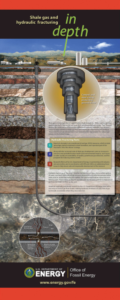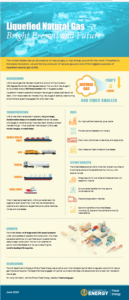West Virginia Energy / Natural Resources
West Virginia Studies


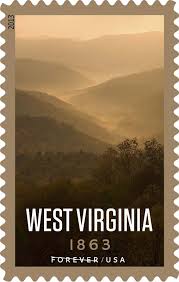
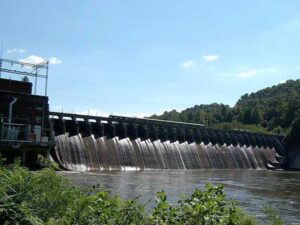
<< Here are the topics on this page; Click to jump/scroll down >>
NATURAL RESOURCES
“West Virginia and Its Natural Resources” – West Virginia State Museum
“West Virginia and Its Natural Resources” video from the West Virginia State Museum at the Culture Center in Charleston.” (32:26/1951/ WV Museum Ed)
“West Virginia State Museum Education”
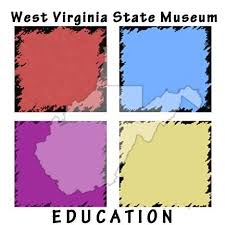 “Search through our programs for grade-specific content and other helpful resources to enhance your West Virginia studies.”
“Search through our programs for grade-specific content and other helpful resources to enhance your West Virginia studies.”
Explore West Virginia State Museum’s “Education” Website
<< More information about the West Virginia State Museum at the Culture Center is on the “Capitol Complex” page >>
“West Virginia Division of Natural Resources”
“Our Mission”

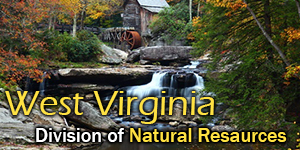 “It is the statutory mission of the West Virginia Division of Natural Resources to provide and administer a long-range comprehensive program for the exploration, conservation, development, protection, enjoyment, and use of the natural resources of the State of West Virginia.”
“It is the statutory mission of the West Virginia Division of Natural Resources to provide and administer a long-range comprehensive program for the exploration, conservation, development, protection, enjoyment, and use of the natural resources of the State of West Virginia.”
Explore “West Virginia Division of Natural Resources” Website
“Programs and Publications”
 “The West Virginia Division of Natural Resources provides a variety of publications and programs to help citizens and visitors learn more about the state’s biodiversity. It’s a great place to learn more about what makes the state a special place to hunt, fish and explore the outdoors.”
“The West Virginia Division of Natural Resources provides a variety of publications and programs to help citizens and visitors learn more about the state’s biodiversity. It’s a great place to learn more about what makes the state a special place to hunt, fish and explore the outdoors.”
Explore WV DNR’s “Programs” Website – Includes links to: Programs – Archery in the Schools; Hunter Education Classes; Wildflower Pilgrimage; Becoming an Outdoors Woman; Master Naturalist Program; National Hunting and Fishing Days; Recruitment, Retention, and Reactivation; Hunters Helping the Hungry. Also links to: Publications – Wonderful West Virginia Magazine and Wildlife Calendar
“Helpful Resources”
 “Scenic trails. Tranquil bodies of water. Diverse flora and fauna. In Almost Heaven one-of-a-kind experiences await for everyone. Grab your gear and get ready to explore the state’s awe-inspiring landscapes and experience its unique mountain adventures.”
“Scenic trails. Tranquil bodies of water. Diverse flora and fauna. In Almost Heaven one-of-a-kind experiences await for everyone. Grab your gear and get ready to explore the state’s awe-inspiring landscapes and experience its unique mountain adventures.”
Explore WV DNR’s “Helpful Resources” Website – Includes Wildlife Watching; Plant Identification; Boating and Water Recreation
“WILDLIFE WATCHING”
(Clicking on the numbered title below opens a webpage with more information)
 1. Observing Wildlife – Observing wildlife in their habitat is one of the best ways to enjoy the outdoors and learn about West Virginia’s abundant natural resources. And the good thing about West Virginia is . . .
1. Observing Wildlife – Observing wildlife in their habitat is one of the best ways to enjoy the outdoors and learn about West Virginia’s abundant natural resources. And the good thing about West Virginia is . . .
2. Landscaping for Wildlife – Whether you live on a farm, a quarter-acre suburban lot or in a city apartment, you can provide habitat for wildlife. In fact, all you need to create wildlife habitat is . . .
3. Mammals – Seventy-four species of mammals are currently found in the Mountain State. Some are easily recognizable, such as . . .
4. Identifying Wildlife – Whether you’re a wildlife enthusiast or an angler or hunter, knowing how to spot animals in the wild is a valuable skill and enjoyable activity. With more than 80 species . . .
5. Snakes Alive! – Snakes are one of the most misunderstood animals in West Virginia. Did you know these colorful and fascinating reptiles play an important role in healthy ecosystems? If not for snakes . . .
6. Feeding Wildlife – One of the best ways to protect West Virginia’s abundant wildlife is keeping it wild. That means we all need to respect habitats, keep a safe distance from wildlife and resist the urge to feed wild animals . . .
7. Photography – From majestic elk to tiny salamanders and everything in between, West Virginia’s rugged mountains, lush forests and beautiful lakes are teeming with wildlife. And one of the best ways to enjoy . . .
8. Birds of West Virginia – West Virginia is a great state to live and visit if you love watching birds and tracking them as they come and go each spring. With its mountains, valleys and everything in between, West Virginia provides . . .
9. West Virginia Wildlife Center – The West Virginia State Wildlife Center is a modern zoological facility displaying native and introduced state wildlife . . .
10. Snakes of West Virginia – Getting to know wildlife in West Virginia is another reason to appreciate the beauty the landscape provides. Among some of these animals are . . .
“PLANT IDENTIFICATION”
(Clicking on the numbered title below opens a webpage with more information)
 1. Native Plant Species – In Almost Heaven, native plants make up our lush forests, line our glorious Appalachian Mountains and adorn our backyard gardens. West Virginia is home to . . .
1. Native Plant Species – In Almost Heaven, native plants make up our lush forests, line our glorious Appalachian Mountains and adorn our backyard gardens. West Virginia is home to . . .
2. Poison Ivy & Plants to Avoid – With our lush forests, expansive mountains, and abundant plant life, West Virginia proves to be the perfect place to get in touch with nature. Miles upon miles of trails weave . . .
3. Exotic & Invasive Species – Exotic species are species of plants and animals that did not occur naturally in the U.S. prior to colonization by Europeans in the 1600s. Since that time, thousands of species have . . .
BOATING & WATER RECREATION
(Clicking on the numbered title below opens a webpage with more information)
 1. Rivers – With thousands of miles of streams to cast your line in, West Virginia is a great place for anglers who enjoy nature’s beauty and the thrill of feeling a tug at the end of their line. Whether you enjoy . . .
1. Rivers – With thousands of miles of streams to cast your line in, West Virginia is a great place for anglers who enjoy nature’s beauty and the thrill of feeling a tug at the end of their line. Whether you enjoy . . .
2. Reservoirs/Rivers and Streams – West Virginia is known as the Mountain State, and the unique topography gives the state an abundance of rivers and streams. With waters ranging from . . .
3. Boat Ramps – For anglers, waterfowl hunters and those who enjoy boating, access to West Virginia’s streams, rivers and lakes is vital to their enjoyment of the outdoors. The West Virginia Division of Natural Resources maintains . . .
4. PFDS (Boating) – There are over 2,000 miles of navigable, fishable streams in West Virginia that comprises over 19,000 surface acres of water. Additionally, there are 21 lakes over 100 acres in size that . . .
“Plants and Animals”
 “Extensive forests. Bountiful rainfall. Rich soil. West Virginia’s diverse landscape is home to a wide array of plants, animals and fungi. Here, you’ll find more than 57 species of amphibians and reptiles, 70 wild mammals, 178 species of fish, nearly 300 species of bird and numerous species of plants and fungi. Step outside and explore West Virginia’s incredible abundance of plants, animals and fungi.”
“Extensive forests. Bountiful rainfall. Rich soil. West Virginia’s diverse landscape is home to a wide array of plants, animals and fungi. Here, you’ll find more than 57 species of amphibians and reptiles, 70 wild mammals, 178 species of fish, nearly 300 species of bird and numerous species of plants and fungi. Step outside and explore West Virginia’s incredible abundance of plants, animals and fungi.”
Explore WV DNR’s “Plants and Animals” Website – Includes Native Species; Conservation; Research
“NATIVE SPECIES”
(Clicking on the numbered title below opens a webpage with more information)
 1. Mammals – Seventy-four species of mammals are currently found in the Mountain State. Some are easily recognizable, such as the white-tailed deer or black bear . . .
1. Mammals – Seventy-four species of mammals are currently found in the Mountain State. Some are easily recognizable, such as the white-tailed deer or black bear . . .
2. Sport Fish – Information on more than three dozen species: Ecological Description/Identification; Habitat; Conservation Issues; Facts; Similar Species
3. Freshwater Mussels – Freshwater mussels are aquatic filter feeding animals that are not unlike marine clams in appearance. Mussels are mollusks with a body covered by a hinged shell that . . .
4. Big Game – White-Tailed Deer; Black Bears, Wild Turkey; Wild Boar
5. Birds – West Virginia is a wonderful place for wild birds. With more than 170 breeding species and an ever-changing assortment of migrants and winter residents, the state offers . . .
6. Amphibians and Reptiles – West Virginia is a state rich with diverse species. It is home to 36 salamander species, 24 snake species, 15 frog and toad species, 14 turtle species, and 6 lizard species. Not only does . . .
(scroll down the “Amphibians and Reptiles” page for more information – click on the “Species Accounts” gray line to view lists.)
7. Plants and Fungi – Vegetation is important to the environment and wildlife of West Virginia. Vegetation helps filter out pollutants and helps fight against erosion. West Virginia’s extensive, diverse forests and bountiful rainfall . . .
“CONSERVATION”
(Clicking on the numbered title below opens a webpage with more information)
 1. Elk Restoration – After more than a 100-year absence from the Mountain State, elk are making a comeback in West Virginia. Now that elk have made a comeback in West Virginia, folks even have . . .
1. Elk Restoration – After more than a 100-year absence from the Mountain State, elk are making a comeback in West Virginia. Now that elk have made a comeback in West Virginia, folks even have . . .
2. Exotic and Invasive Species – Includes: Exotic Species; Invasive Species; Learn More about Invasive Species: Invasive Plants; Top Invasive Plants
3. Songbird Forest Management Guidelines – Includes links to Songbird Forest Management Guidelines and West Virginia Priority Species Guide
4. Rare, Threatened and Endangered Species – The Endangered Species Act establishes protections for plants and animals considered to be endangered or threatened (i.e. listed species). West Virginia is a permanent home to . . .
5. Nuisance Wildlife – The presence of wild animals on property is enjoyed and sometimes encouraged by many land and homeowners. When animals cause conflicts with humans . . .
“RESEARCH”
(Clicking on the numbered title below opens a webpage with more information)
 1. Scientific Collecting Permit – Scientific Collecting Permits are required to handle or collect any species of wildlife on private or public lands in West Virginia for . . .
1. Scientific Collecting Permit – Scientific Collecting Permits are required to handle or collect any species of wildlife on private or public lands in West Virginia for . . .
2. Surveys and Citizen Science – Opportunities are offered for hunters, anglers and the general public to participate in surveys and scientific data collection.
3. Wildlife Disease – Diseases in wildlife populations range from highly visible but generally insignificant (e.g., cutaneous fibromatosis in White-tailed Deer) to cryptic but extremely concerning for . . .
“West Virginia Department of Environmental Protection”
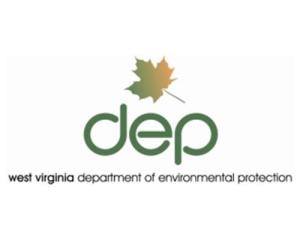 “The mission statement of DEP is: ‘Promoting a Healthy Environment.’ This is DEP’s mission and our commitment to the people of our state.”
“The mission statement of DEP is: ‘Promoting a Healthy Environment.’ This is DEP’s mission and our commitment to the people of our state.”
Explore “West Virginia Dept of Environmental Protection” Website
“West Virginia Watersheds”

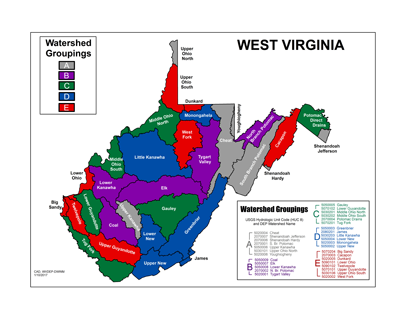 “West Virginia has 32 watersheds divided according to the USGS (US Geological Survey) hydrologic unit codes (HUC) that contribute to the Chesapeake Bay and the Gulf of Mexico. The waters west of the eastern continental divide flow into the Ohio River. The Ohio joins the Mississippi River at Cairo, IL. The Mississippi flows into the Gulf of Mexico at New Orleans, LA. The eastern continental divide changes the course of five of our eastern rivers towards the Potomac River. The Potomac enters the Chesapeake Bay southeast of Washington DC. A few streams in the southeastern corner of the state flow towards the James River.”
“West Virginia has 32 watersheds divided according to the USGS (US Geological Survey) hydrologic unit codes (HUC) that contribute to the Chesapeake Bay and the Gulf of Mexico. The waters west of the eastern continental divide flow into the Ohio River. The Ohio joins the Mississippi River at Cairo, IL. The Mississippi flows into the Gulf of Mexico at New Orleans, LA. The eastern continental divide changes the course of five of our eastern rivers towards the Potomac River. The Potomac enters the Chesapeake Bay southeast of Washington DC. A few streams in the southeastern corner of the state flow towards the James River.”
Explore WV DEP’s “Watersheds” Map jpg – also includes: Mapping Tools and Additional Resources
“West Virginia Geological & Economic Survey”
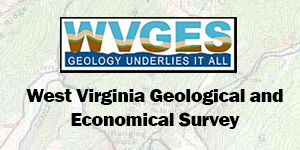 “West Virginia’s center for geology, energy resources, industrial minerals, geologic hazards, groundwater, topographic and geologic maps, earth science, and much more.
“West Virginia’s center for geology, energy resources, industrial minerals, geologic hazards, groundwater, topographic and geologic maps, earth science, and much more.
“The Survey is here to serve you – to answer your West Virginia geology-related and earth science questions, whether you are a landowner or engineer, professional or student, private citizen or company representative.”
Explore “West Virginia Geological and Economic Survey” Website
Explore WV GES’s “West Virginia Geology” Website
Explore WV GES’ “Maps” Website
Explore WV GES’ “Geologic Maps of West Virginia” Website
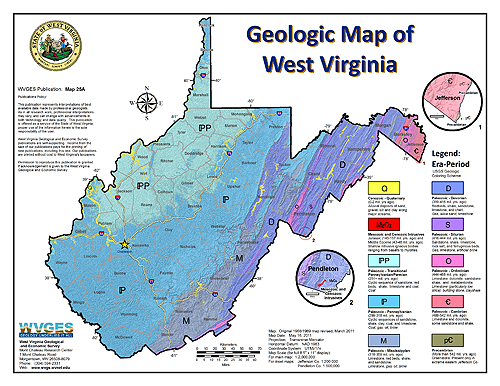
“Physiographic Provinces of West Virginia”
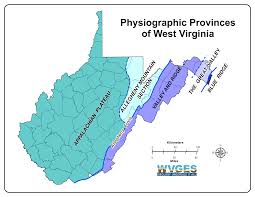 “Most of West Virginia is a dissected, westward-tilting plateau called the Appalachian Plateau Province. In the northeast part of this province, a subprovince called the Allegheny Mountain Section combines elements of the folded mountains to the east and the dissected plateau. This western two-thirds of the state are relatively flat-lying rocks containing minable coal. The eastern third of the state is comprised of folded and faulted rocks with no minable coal. The eastern boundary of the Appalachian Plateau, the Allegheny Front, is a prominent geological feature which runs northeast-southwest across the state. East of the Allegheny Front are a series of long folded mountains and valleys defining the Valley and Ridge Province. East of the main group of folded mountains and valleys is the Great Valley subprovince. Along the eastern State boundary in Jefferson County is the Blue Ridge Province. The oldest rocks in the state are located in the extreme eastern part, and as one proceeds westward, the rocks are younger and younger “
“Most of West Virginia is a dissected, westward-tilting plateau called the Appalachian Plateau Province. In the northeast part of this province, a subprovince called the Allegheny Mountain Section combines elements of the folded mountains to the east and the dissected plateau. This western two-thirds of the state are relatively flat-lying rocks containing minable coal. The eastern third of the state is comprised of folded and faulted rocks with no minable coal. The eastern boundary of the Appalachian Plateau, the Allegheny Front, is a prominent geological feature which runs northeast-southwest across the state. East of the Allegheny Front are a series of long folded mountains and valleys defining the Valley and Ridge Province. East of the main group of folded mountains and valleys is the Great Valley subprovince. Along the eastern State boundary in Jefferson County is the Blue Ridge Province. The oldest rocks in the state are located in the extreme eastern part, and as one proceeds westward, the rocks are younger and younger “
Explore WV GES’ “Physiographic Provinces” Website
“History of West Virginia Mineral Industries”

(Most of the pages on the “History of West Virginia Mineral Industries” from WV GES were last updated in 2004)
“Salt in West Virginia”
![]()
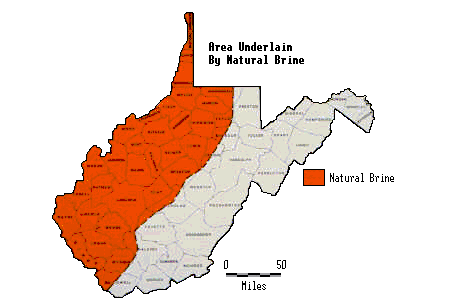 “Salt was the first West Virginia mineral industry to be developed. The State’s salt was being utilized long before the arrival of man.”
“Salt was the first West Virginia mineral industry to be developed. The State’s salt was being utilized long before the arrival of man.”
Explore WV GES’ “Salt” Website – (last updated in 2004)
 “Much of the northern panhandle and north-central portion of the State are underlain by bedded salt deposits over 50-feet thick. . .”
“Much of the northern panhandle and north-central portion of the State are underlain by bedded salt deposits over 50-feet thick. . .”
Continue reading at WV GES’ “West Virginia Geology-Salt” Website – (last updated in 2004)
“Iron in West Virginia”
![]() “Iron was almost as essential to pioneer life as was salt, the first mineral resource exploited, and was needed for a variety of agricultural and household purposes. The iron industry, therefore, developed at an early stage in West Virginia’s history.”
“Iron was almost as essential to pioneer life as was salt, the first mineral resource exploited, and was needed for a variety of agricultural and household purposes. The iron industry, therefore, developed at an early stage in West Virginia’s history.”
Explore WV GES’ “Iron” Website – (last updated in 2004)
“Limestone in West Virginia”
![]() “Limestone has been a valuable resource in West Virginia since the arrival of the early settlers, who burned local limestone to produce agricultural lime.”
“Limestone has been a valuable resource in West Virginia since the arrival of the early settlers, who burned local limestone to produce agricultural lime.”
Explore WV GES’ “Limestone” Website – (last updated in 2004)
“Each year West Virginia mines and quarries produce 10 to 13 million tons of limestone and dolomite valued at between $40,000,000 and $53,000,000. These materials are used to make a wide variety of products, . . . “
Continue reading at WV GES’ ‘West Virginia Geology–Limestone and Dolomite” Website – (last updated in 2004)
“How Lime is Made”
“See up close how limestone is quarried, crushed, sorted and burnt to temperatures up to 1400ºC to make lime.” (4:29/2012/British Lime Association)
“Sandstone in West Virginia”
![]() Glass Sand – Dimension Stone – Abrasive Stone
Glass Sand – Dimension Stone – Abrasive Stone
Explore WV GES’ “Sandstone” Website – (last updated in 2012)
“Each year West Virginia quarries produce between 1,500,000 and 2,000,000 tons of sandstone. . . “
Continue reading at WV GES’ “West Virginia Geology-Sandstone” Website – (last updated in 2004)
“The State’s principal commercial sand and gravel deposits occur in and along the Ohio River. Commercial extraction is from dredging the river channel and land-based operations on the river terraces. . .”
Continue reading at WV GES’ “West Virginia Geology-Sand and Gravel” Website – (last updated in 2004)
“Clay in West Virginia”
![]() “Clay has been an important resource in West Virginia throughout history. It has primarily been used in the pottery and brick industries. The quality of the clay (content of fluxing impurities) is important in determining its uses.”
“Clay has been an important resource in West Virginia throughout history. It has primarily been used in the pottery and brick industries. The quality of the clay (content of fluxing impurities) is important in determining its uses.”
Explore WV GES’ “Clay” Website– (last updated in 2004)
“West Virginia currently has three companies which together produce between 250,000 and 350,000 tons of clay and shale each year. . . “
Continue reading at WVGES’ “West Virginia Geology – Clay and Shale” Website – (last updated in 2004)
“West Virginia Forests”
 “West Virginia is the third most heavily forested state in the nation, behind only Maine and New Hampshire. Forests cover 78 percent (12 million acres) of the state’s 15.4 million acres. Almost all of the forested land (11.8 million acres or 98.3 percent) is classified as commercial forestland, which is available for timber production. Timberland accounts for a significant percentage of total land for all West Virginia counties, ranging from 43.7 percent in Berkeley and Jefferson counties to 93.5 percent in Webster County. In 2000, more than 88 percent of timberland in West Virginia was privately owned by individuals, corporate businesses, farmers and the forest products industry. West Virginia is the second leading hardwood state in the nation with 22.3 billion cubic feet of hardwood growing stock, trailing only Pennsylvania.”
“West Virginia is the third most heavily forested state in the nation, behind only Maine and New Hampshire. Forests cover 78 percent (12 million acres) of the state’s 15.4 million acres. Almost all of the forested land (11.8 million acres or 98.3 percent) is classified as commercial forestland, which is available for timber production. Timberland accounts for a significant percentage of total land for all West Virginia counties, ranging from 43.7 percent in Berkeley and Jefferson counties to 93.5 percent in Webster County. In 2000, more than 88 percent of timberland in West Virginia was privately owned by individuals, corporate businesses, farmers and the forest products industry. West Virginia is the second leading hardwood state in the nation with 22.3 billion cubic feet of hardwood growing stock, trailing only Pennsylvania.”
“West Virginia Division of Forestry”
 “The West Virginia Division of Forestry is committed to protecting, nurturing, and promoting the wise utilization and thus the sustainability of our state’s forest resources.
“The West Virginia Division of Forestry is committed to protecting, nurturing, and promoting the wise utilization and thus the sustainability of our state’s forest resources.
- Fire Protection: Responsible for protecting nearly 12 million acres of state and privately owned forestland across West Virginia from wildfire.
- Investigative Unit: Investigates all violations of the state’s fire laws and enforces violations of the Logging Sediment Control Act of 1992.
- Water Quality: Issues licenses to anyone who buys timber or logs for resale or who harvests timber within the state, and provides training and certification for loggers in accordance with the Logging Sediment Control Act.
- Managed Timberland: Promotes sustainable forestry within the state by providing a formula-based method of taxation for forestland.
- Forest Management: Provides cooperative forest management programs for private nonindustrial forest landowners to promote sustainable forestry practices. Also regulates the digging of ginseng, manages seven state forests, as well as the operations of the Clements State Tree Nursery.
- Urban and Community Forestry: Helps municipalities throughout the state establish long-term tree care programs.”
Explore “West Virginia Division of Forestry” Website
“Logging the Forests of West Virginia” – Potomac Appalachian Trail Club
 “If you’ve ever backpacked in the West Virginia mountains, there’s one fact that becomes quickly evident. Virtually every hollow, every stream, and every mountain has a railroad grade. In some places, the railroad ties are still on the ground. In others, visitors might run across a rusting washtub in the middle of the woods, or even an occasional railroad spike or rail. Regardless of how far back you go or how deep into the wilderness, the grades are there – mute testament to the energy of man, power of the dollar, and the complete destruction of the West Virginia forest ecosystem.
“If you’ve ever backpacked in the West Virginia mountains, there’s one fact that becomes quickly evident. Virtually every hollow, every stream, and every mountain has a railroad grade. In some places, the railroad ties are still on the ground. In others, visitors might run across a rusting washtub in the middle of the woods, or even an occasional railroad spike or rail. Regardless of how far back you go or how deep into the wilderness, the grades are there – mute testament to the energy of man, power of the dollar, and the complete destruction of the West Virginia forest ecosystem.
“. . .The destruction of these once magnificent forests in the 1880’s and stretching over a forty year period was “complete”. Virtually every tree on every mountain was cut down and hauled out by horse, steam rigger, or train. The logging companies that swarmed over the West Virginia mountains removed these trees “with pride”. This was the age of the Industrial Revolution – man’s superiority over nature. The days of the railroad, cattle and timber barons, and industrial giants like J.P. Morgan. ‘Progress was good.’ ‘Nature existed to serve man’s superior intellect and needs. . . “
Explore information from PATC’s “Logging the Forests of West Virginia” Website (pdf) to continue reading – includes multiple photographs
Explore “Potomac Appalachian Trail Club” Website
“Big Tree Program”

 “The West Virginia Big Tree Program is an ongoing effort to locate, measure and record the largest trees in the State. Presently, there are 91 species on the West Virginia Big Tree Register and new ones are added as they are found. Nominations always are accepted, and additions are made to the register after verification by West Virginia Division of Forestry personnel.” (3:26/2014/WV Dept. of Commerce)
“The West Virginia Big Tree Program is an ongoing effort to locate, measure and record the largest trees in the State. Presently, there are 91 species on the West Virginia Big Tree Register and new ones are added as they are found. Nominations always are accepted, and additions are made to the register after verification by West Virginia Division of Forestry personnel.” (3:26/2014/WV Dept. of Commerce)
Explore West Virginia Division of Forestry’s “Big Tree Program” Website
“Tree Champions of West Virginia”

 “As part of West Virginia’s centennial celebration in 1963, the Division of Forestry held a big tree contest. More than 240 nominations representing 37 species were submitted. Half a century later, as the state celebrates its sesquicentennial, the West Virginia Big Tree Register boasts 124 species, including three champions from the original 1963 list and three national champions. Because trees grow in a variety of shapes and sizes, the fairest way to determine which ones make the Big Tree Register is . . .”
“As part of West Virginia’s centennial celebration in 1963, the Division of Forestry held a big tree contest. More than 240 nominations representing 37 species were submitted. Half a century later, as the state celebrates its sesquicentennial, the West Virginia Big Tree Register boasts 124 species, including three champions from the original 1963 list and three national champions. Because trees grow in a variety of shapes and sizes, the fairest way to determine which ones make the Big Tree Register is . . .”
“Hardwood Alliance Zone”
 “The West Virginia Hardwood Alliance consists of nine counties (Barbour, Grant, Hardy, Lewis, Preston, Randolph, Tucker, Upshur, Webster) in the heart of West Virginia’s hardwood zone. We provide a competitive advantage to the hardwood industry business in relation to relocation, expansion, and development. Three advantages set us apart from other locations: abundant natural resources located near major transportation, a highly skilled labor force available at competitive wages, and an outstanding quality of life.”
“The West Virginia Hardwood Alliance consists of nine counties (Barbour, Grant, Hardy, Lewis, Preston, Randolph, Tucker, Upshur, Webster) in the heart of West Virginia’s hardwood zone. We provide a competitive advantage to the hardwood industry business in relation to relocation, expansion, and development. Three advantages set us apart from other locations: abundant natural resources located near major transportation, a highly skilled labor force available at competitive wages, and an outstanding quality of life.”
Explore “Hardwood Alliance Zone” Website
“A video produced to show the benefits and history of the West Virginia Hardwood Alliance Zone. Sustainable, Magnificent, Abundant.” (4:01/2013/ WV Hardwoods)
“West Virginia Forestry Association”
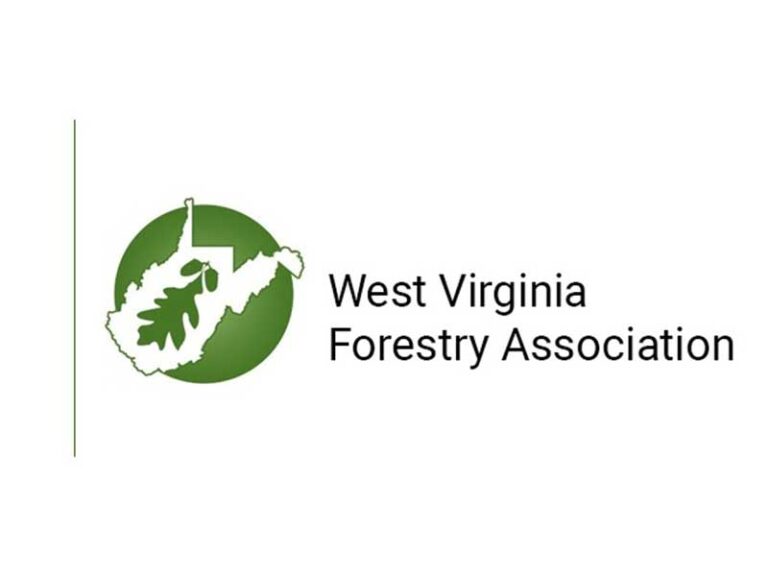 “The West Virginia Forestry Association is a non-profit organization funded by its membership. Our members include individuals and businesses involved in forest management, timber production, firewood production, harvesting, and wood product manufacturing. Our members are concerned with protecting the environment, as well as enhancing the future of West Virginia’s forests through multiple-use management.”
“The West Virginia Forestry Association is a non-profit organization funded by its membership. Our members include individuals and businesses involved in forest management, timber production, firewood production, harvesting, and wood product manufacturing. Our members are concerned with protecting the environment, as well as enhancing the future of West Virginia’s forests through multiple-use management.”
Explore “West Virginia Forestry Association” Website
“Ideas That Keep Growing” (7:18/2013/ WVFA)
“Farming for West Virginia Timber”
 “Farmers in West Virginia grow a wide variety of crops, but a great majority of them depend on timber as well as livestock and row crops to stay profitable on the farm. Timber is an important agricultural product in the Mountain State with timber harvested in each of the state’s 55 counties providing four billion dollars a year in income to the state.” (5:15/2008/ America’s Heartland)
“Farmers in West Virginia grow a wide variety of crops, but a great majority of them depend on timber as well as livestock and row crops to stay profitable on the farm. Timber is an important agricultural product in the Mountain State with timber harvested in each of the state’s 55 counties providing four billion dollars a year in income to the state.” (5:15/2008/ America’s Heartland)
“Wood Products”
 “Wood is West Virginia’s greatest renewable resource, with almost 80 percent of the state covered in productive forests. With this abundance of resources, the forest products industry is well established in West Virginia, with over 500 companies directly involved in state-based forest product operations. The industry ranges from small logging companies employing three to ten people to individual handcrafters producing beautiful handmade furniture and other products.”
“Wood is West Virginia’s greatest renewable resource, with almost 80 percent of the state covered in productive forests. With this abundance of resources, the forest products industry is well established in West Virginia, with over 500 companies directly involved in state-based forest product operations. The industry ranges from small logging companies employing three to ten people to individual handcrafters producing beautiful handmade furniture and other products.”
“West Virginia’s 12 million acres of forestland and 75 billion board feet of timber inventory form the basis of a thriving wood industry. As one of the top wood-producing states in the nation, West Virginia outputs more than 700 million board feet of lumber, 770 million square feet of OSB and 800 million square feet of veneer annually. The state ranks third nationally in percentage of forested land at 79 percent.”
<<For examples of products made from wood, see the MH3WV “West Virginia Made/Grown” page.>>
ENERGY
“West Virginia Office of Energy”
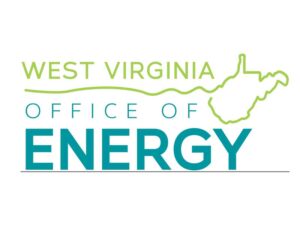 “The West Virginia Office of Energy is responsible for the formulation and implementation of fossil, renewable and energy efficiency initiatives designed to advance energy resource development opportunities and provide energy services to businesses, communities and homeowners in West Virginia.”
“The West Virginia Office of Energy is responsible for the formulation and implementation of fossil, renewable and energy efficiency initiatives designed to advance energy resource development opportunities and provide energy services to businesses, communities and homeowners in West Virginia.”
Explore “West Virginia Office of Energy” Website
“US Department of Energy”
 “The mission of the [United States] Energy Department is to ensure America’s security and prosperity by addressing its energy, environmental and nuclear challenges through transformative science and technology solutions.”
“The mission of the [United States] Energy Department is to ensure America’s security and prosperity by addressing its energy, environmental and nuclear challenges through transformative science and technology solutions.”
Explore “US Department of Energy” Website
“West Virginia Energy Profile and Energy Estimates”
 “Quick Facts”
“Quick Facts”
- West Virginia ranked fifth among the states in total energy production in 2018, accounting for 5% of the nation’s total.
- In 2019, West Virginia was the second-largest coal producer in the nation, after Wyoming, and accounted for 13% of U.S. total coal production. More than one-third of the more than 93 million tons of coal mined in West Virginia was exported to foreign markets.
- Coal-fired electric power plants accounted for 91% of West Virginia’s electricity net generation in 2019, renewable energy resources—primarily hydroelectric power and wind energy—contributed almost 6% and natural gas provided more than 3%.
- In 2019, West Virginia was sixth in the nation in natural gas marketed production with nearly 2.2 trillion cubic feet.
- Although West Virginia’s 2019 crude oil production accounts for less than 0.5% of the nation’s total, the state’s output is more than six times greater than it was in 2012 because of production from the Marcellus Shale.
Explore US Energy Administration’s “West Virginia” Website – a great amount of information
“Student Energy”

 “Student Energy empowers the next generation of leaders who are accelerating the transition to a sustainable, equitable energy future. We work with a network of 50,000 young people from over 120 countries.”
“Student Energy empowers the next generation of leaders who are accelerating the transition to a sustainable, equitable energy future. We work with a network of 50,000 young people from over 120 countries.”
[Student Energy has a series of videos on Energy and Alternative/Renewable Energy – several are immediately below with others located on specific topics further down this page.]
Explore “Student Energy” Website
“Energy 101”
 “Energy is the capacity of a physical system to perform work.” (2:35/2015/Student Energy)
“Energy is the capacity of a physical system to perform work.” (2:35/2015/Student Energy)
“Energy Units 101”
 “Energy is the capacity to do work but to fully understand the topic it is important to understand the various ways it is measured.” (3:13/2021/Student Energy)
“Energy is the capacity to do work but to fully understand the topic it is important to understand the various ways it is measured.” (3:13/2021/Student Energy)
“Electricity 101”
 “Electricity is the physical flow of electrons, referred to as an electrical current.” (3:10/2015/Student Energy)
“Electricity is the physical flow of electrons, referred to as an electrical current.” (3:10/2015/Student Energy)
“Electrical Grid 101”
 “The electrical grid is the means through which power is generated, transmitted, and distributed to the end user.” (3:10/2015/Student Energy)
“The electrical grid is the means through which power is generated, transmitted, and distributed to the end user.” (3:10/2015/Student Energy)
“Energy Storage 101”
 “Energy Storage systems are the set of methods and technologies used to store electricity.” (1:27/2015/Student Energy)
“Energy Storage systems are the set of methods and technologies used to store electricity.” (1:27/2015/Student Energy)
“Energy Efficiency 101”
 “Energy efficiency is measured as the ratio of energy output to energy input, as a percentage. The goal of improving energy efficiency is to deliver the same service to the end user, using less energy.” (3:13/2021/ Student Energy)
“Energy efficiency is measured as the ratio of energy output to energy input, as a percentage. The goal of improving energy efficiency is to deliver the same service to the end user, using less energy.” (3:13/2021/ Student Energy)
“Energy and Climate Change 101”
 “Climate change refers to changes in the Earth’s climates, at local, regional, or global scales, and is most commonly used to describe anthropogenic, or human-caused, climate change.” (4:19/2021/Student Energy)
“Climate change refers to changes in the Earth’s climates, at local, regional, or global scales, and is most commonly used to describe anthropogenic, or human-caused, climate change.” (4:19/2021/Student Energy)
RENEWABLE / ALTERNATIVE ENERGY
“Clean Energy”
 “A clean energy revolution is taking place across America, underscored by the steady expansion of the U.S. renewable energy sector. . .
“A clean energy revolution is taking place across America, underscored by the steady expansion of the U.S. renewable energy sector. . .
“Responsible development of all of America’s rich energy resources — including solar, wind, water, geothermal, bioenergy & nuclear — will help ensure America’s continued leadership in clean energy. Moving forward, the Energy Department will continue to drive strategic investments in the transition to a cleaner, domestic and more secure energy future.”
Explore US Dept of Energy’s “Clean Energy” website – includes links for more information on solar, wind, water, geothermal, bioenergy, nuclear, and hydrogen & fuel cells
“Ramping Up Renewable Energy . . .”
“Ramping up Renewable Energy to Decrease Costs, Reduce Risk, and Strengthen Economic Opportunities for West Virginia”
 “Less than 5% of West Virginia’s electricity generation comes from renewable resources. Hydropower has long been used in mountainous West Virginia, and the state’s first hydroelectric power plants were built around 1900. West Virginia’s largest hydroelectric facility, with more than 100 megawatts of capacity, was built in the 1930s, and the newest, with a capacity of 80 megawatts, began operating in 2001. Of the state’s utility-scale hydroelectric facilities, the industrial sector operates the largest share, followed closely by electric utilities and independent power producers. Hydroelectric power accounts for less than 2% of the state’s net electricity generation. Power generation from wind energy is on the increase, but most of West Virginia’s wind energy potential is restricted to the narrow ridges in northeastern West Virginia. There are almost 700 megawatts of installed wind capacity in West Virginia, and, recently, wind energy contributed slightly more than hydropower to the state’s net electricity generation. . . Biomass and solar photovoltaic generation each contribute less than 0.01% to the state’s utility-scale electricity generation.”
“Less than 5% of West Virginia’s electricity generation comes from renewable resources. Hydropower has long been used in mountainous West Virginia, and the state’s first hydroelectric power plants were built around 1900. West Virginia’s largest hydroelectric facility, with more than 100 megawatts of capacity, was built in the 1930s, and the newest, with a capacity of 80 megawatts, began operating in 2001. Of the state’s utility-scale hydroelectric facilities, the industrial sector operates the largest share, followed closely by electric utilities and independent power producers. Hydroelectric power accounts for less than 2% of the state’s net electricity generation. Power generation from wind energy is on the increase, but most of West Virginia’s wind energy potential is restricted to the narrow ridges in northeastern West Virginia. There are almost 700 megawatts of installed wind capacity in West Virginia, and, recently, wind energy contributed slightly more than hydropower to the state’s net electricity generation. . . Biomass and solar photovoltaic generation each contribute less than 0.01% to the state’s utility-scale electricity generation.”
Explore West Virginia Division of Energy’s “Renewable Energy” Website
“A Kid’s Guide to Renewable Energy”
 “Energy is the force that makes things work. Without it, people couldn’t cook food, drive their cars, or power their homes with electricity. If there were no more energy, imagine how different and how much harder life would be. That’s why other, more renewable, sources of energy are necessary. Renewable energy is energy that comes from things that are natural and will always be available. It’s important to know what these types of energy are and why they are needed.”
“Energy is the force that makes things work. Without it, people couldn’t cook food, drive their cars, or power their homes with electricity. If there were no more energy, imagine how different and how much harder life would be. That’s why other, more renewable, sources of energy are necessary. Renewable energy is energy that comes from things that are natural and will always be available. It’s important to know what these types of energy are and why they are needed.”
“Renewable Energy 101”
 “Energy sources that are not depleted when used or are naturally replenished within a human lifetime.” (1:31/2015/Student Energy)
“Energy sources that are not depleted when used or are naturally replenished within a human lifetime.” (1:31/2015/Student Energy)
“Lab 304: Alternative Fuels”
“Lab 304: Alternative Fuels – Part 1”
“To counter the increasing costs of oil and its effects on the environment, West Virginian’s are looking to alternative fuels and means of transportation. Emily Corio produced this story for WVPBS’s show ‘Outlook.’ “ (7:05/2008/WV Public Broadcasting)
“Lab 304: Alternative Fuels – Part 2” (3:46/2008/WV Public Broadcasting)
“Mountain State Science – Renewable Energy”
“Renewable energy is the topic of tonight’s Mountain State Science report. It’s an industry that’s taking off all around us. Cecelia Mason reports the Institute for Environmental Studies at Shepherd University is training students in everything from sustainable gardening to wind turbine maintenance.” (8:09/2011/ WV Public Broadcasting)
“HYDRO”
“Water 101”
“The energy harnessed from moving water can be used to create electricity; the two most common technologies for this are – Hydropower and Tidal Power.” (2:00/2015/Student Energy)
“Hydropower 101”
“Hydropower or hydroelectricity refers to the conversion of energy from flowing water into electricity.” (3:12/2015/Student Energy)
“Tidal Power”
“Tidal power converts the energy from the natural rise and fall of the tides into electricity.” (3:22/2015/Student Energy)
“Hydropower Basics”
![]()
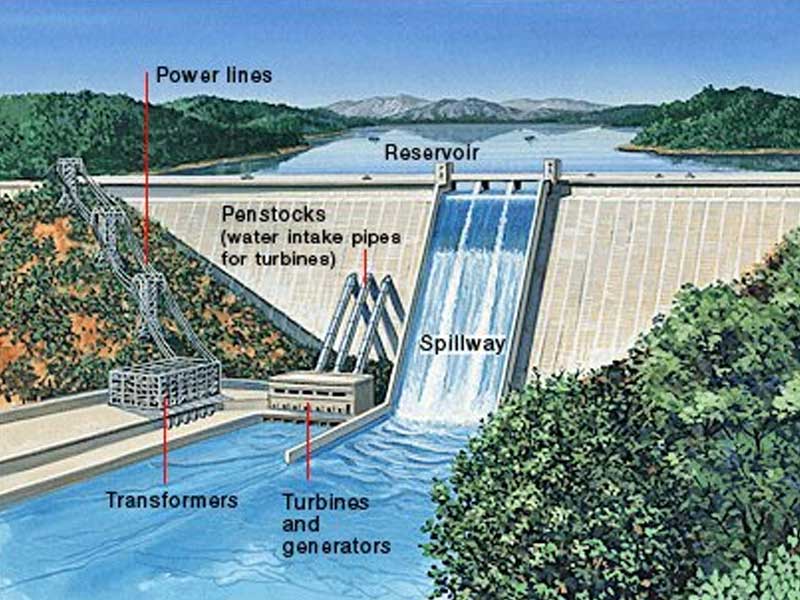 “Most people associate water power with the Hoover Dam—a huge facility harnessing the power of an entire river behind its walls—but hydropower facilities come in all sizes. Some may be very large, but they can be tiny too, taking advantage of water flows in municipal water facilities or irrigation ditches. They can even be “dam-less,” with diversions or run-of-river facilities that channel part of a stream through a powerhouse before the water rejoins the main river. . .”
“Most people associate water power with the Hoover Dam—a huge facility harnessing the power of an entire river behind its walls—but hydropower facilities come in all sizes. Some may be very large, but they can be tiny too, taking advantage of water flows in municipal water facilities or irrigation ditches. They can even be “dam-less,” with diversions or run-of-river facilities that channel part of a stream through a powerhouse before the water rejoins the main river. . .”
Explore US DOE EERE’s “Hydropower Basics” Website – includes links to How Hydropower Works, Benefits of Its Use, and Hydropower Use Throughout History
“Energy 101: Hydroelectric Power”
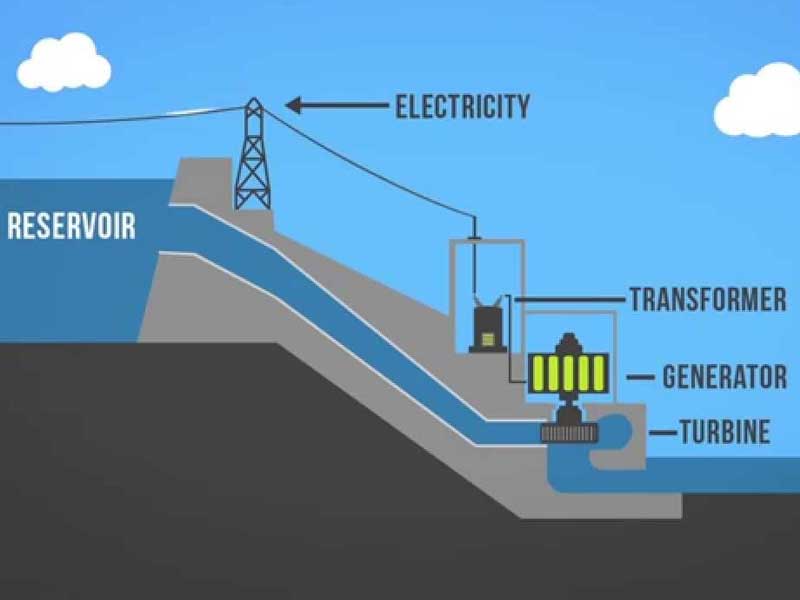 “
“ Humans have been using water to generate power for thousands of years. Hydroelectric power, or hydropower, captures the kinetic energy of flowing water and turns it into electricity, which is then fed into the electrical grid to be used in homes and businesses. This edition of Energy 101 shows how the Energy Department is supporting the development of new hydropower technologies to produce clean, renewable, and reliable power here in the United States.”
Humans have been using water to generate power for thousands of years. Hydroelectric power, or hydropower, captures the kinetic energy of flowing water and turns it into electricity, which is then fed into the electrical grid to be used in homes and businesses. This edition of Energy 101 shows how the Energy Department is supporting the development of new hydropower technologies to produce clean, renewable, and reliable power here in the United States.”
Explore US Dept of Energy’s “Energy 101: Hydroelectric Power” Website
 “Learn how hydropower captures the kinetic energy of flowing water and turns it into electricity for our homes and businesses.” (3:51/2013/US DOE)
“Learn how hydropower captures the kinetic energy of flowing water and turns it into electricity for our homes and businesses.” (3:51/2013/US DOE)
“ANDRITZ Hydro Turbine animation”
![]() “3D-animation of the working principle of a small hydropower plant with a Pelton turbine.” (2:03/2019/Andritz Group) (Andritz is a large company based in Austria)
“3D-animation of the working principle of a small hydropower plant with a Pelton turbine.” (2:03/2019/Andritz Group) (Andritz is a large company based in Austria)
“MidAmerican Energy Hydroelectric Power Plant Virtual Tour”
![]() (10:27/2015/ MidAmerican Energy)
(10:27/2015/ MidAmerican Energy)
“How Hydroelectricity Works”
Animation from Canada explaining how electricity is produced using a hydroelectric facility. (2:10/2008/RobertWoodman)
“Hydroelectric Energy in West Virginia”
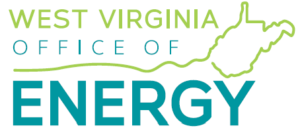
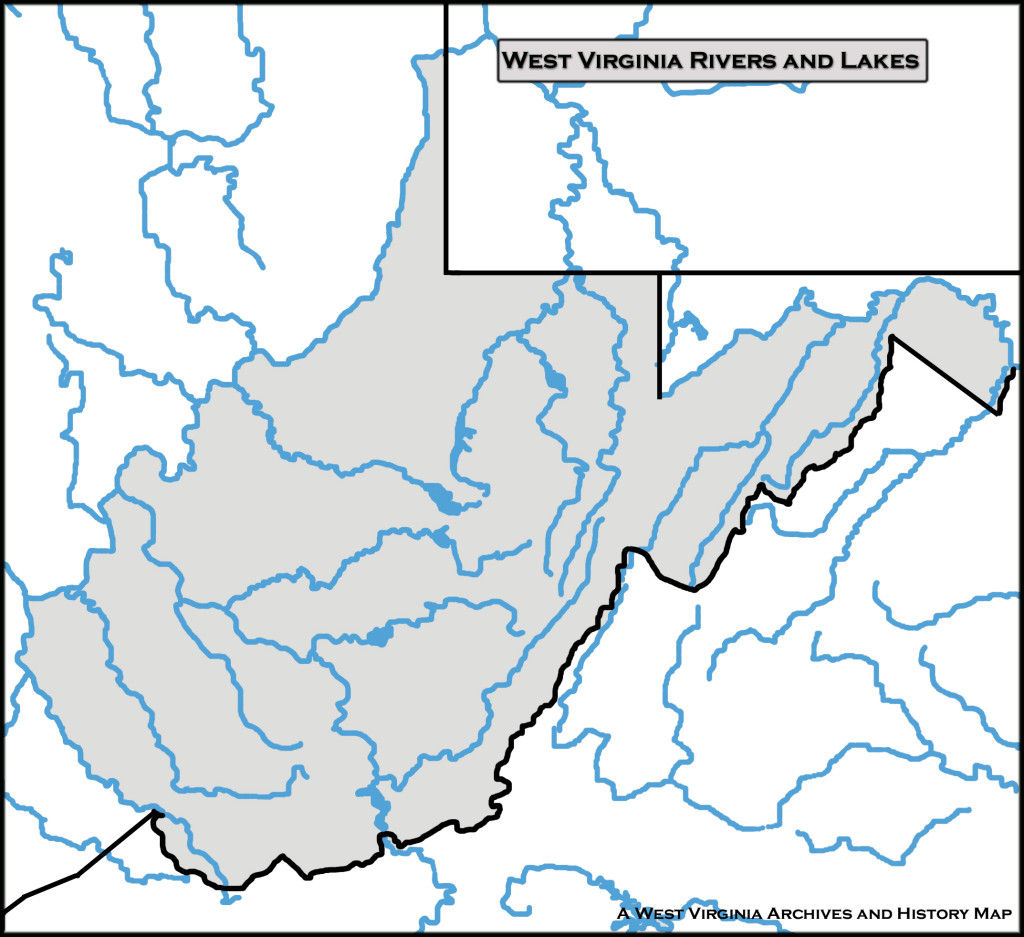 “Hydropower has long been used in mountainous West Virginia, and the state’s first hydroelectric power plants were built around 1900. West Virginia’s largest hydroelectric facility, with more than 100 megawatts of capacity, was built in the 1930s, and the newest, with a capacity of 80 megawatts, began operating in 2001. Of the state’s utility-scale hydroelectric facilities, the industrial sector operates the largest share, followed closely by electric utilities and independent power producers. Hydroelectric power accounts for less than 2% of the state’s net electricity generation.”
“Hydropower has long been used in mountainous West Virginia, and the state’s first hydroelectric power plants were built around 1900. West Virginia’s largest hydroelectric facility, with more than 100 megawatts of capacity, was built in the 1930s, and the newest, with a capacity of 80 megawatts, began operating in 2001. Of the state’s utility-scale hydroelectric facilities, the industrial sector operates the largest share, followed closely by electric utilities and independent power producers. Hydroelectric power accounts for less than 2% of the state’s net electricity generation.”
Explore West Virginia Office of Energy’s “Renewable Energy” Website
In addition to the Lake Lynn and the Hawks Nest/Glen Ferris operations, most of the US Army Corps of Engineers’ Locks and Dams as well as the Flood Control Dams have been or are being retrofitted with hydroelectric generating facilities.
“Lake Lynn” (Cheat Lake)
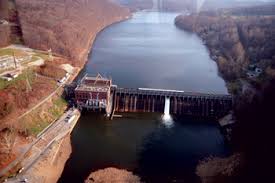 “Located in northeastern Monongalia County, W.Va., Cheat Lake was formed in 1925 by damming the Cheat River to serve the needs of a hydroelectric generating facility, the 52-megawatt Lake Lynn Power Station. . .”
“Located in northeastern Monongalia County, W.Va., Cheat Lake was formed in 1925 by damming the Cheat River to serve the needs of a hydroelectric generating facility, the 52-megawatt Lake Lynn Power Station. . .”
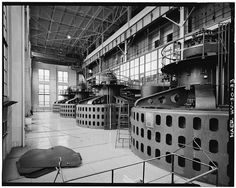 “The area was documented for development by a young George Washington, who envisioned a canal and portage system involving the Cheat River and the Lake Lynn area. Actual planning and development of the hydro plant began in 1910, but was stalled around the time of World War I. Construction was resumed in 1925, and the first water flowed over the 125-foot dam on Dec. 23, 1925. At a ceremony in 1927, a bronze tablet, embedded in a great rock near the power station, dedicates the lake and the generating facility to the public “In lasting beauty for recreation and the supplying of essential service.” The 13-mile lake has been a popular recreation spot ever since.”
“The area was documented for development by a young George Washington, who envisioned a canal and portage system involving the Cheat River and the Lake Lynn area. Actual planning and development of the hydro plant began in 1910, but was stalled around the time of World War I. Construction was resumed in 1925, and the first water flowed over the 125-foot dam on Dec. 23, 1925. At a ceremony in 1927, a bronze tablet, embedded in a great rock near the power station, dedicates the lake and the generating facility to the public “In lasting beauty for recreation and the supplying of essential service.” The 13-mile lake has been a popular recreation spot ever since.”
 [Previously owned by First Energy and Allegheny Energy, Lake Lynn is now owned by Eagle Creek Renewable Energy]
[Previously owned by First Energy and Allegheny Energy, Lake Lynn is now owned by Eagle Creek Renewable Energy]
Explore Eagle Creek Renewable Energy’s “Lake Lynn” commercial website
“Lake Lynn Dam At Cheat Lake West Virginia”
“Lake Lynn Dam, just yards from the Pennsylvania / West Virginia border close to Morgantown WV, creates the reservoir now known as Cheat Lake, a popular boating and fishing spot. Cheat Lake has hiking/biking trails and recreation for everyone.” (3:49/2012/ETCruzer)
“Hawks Nest / Glen Ferris”
<<This section does not deal with the original construction. For that information, see the MH3WV “History” page>>
 “Hawks Nest tunnel and dam is a marvel of modern engineering. Completed in June, 1936, the tunnel is 16,240 feet in length and drops in elevation a total of 163 feet to a hydroelectric plant downstream near Gauley Bridge. It creates a 5.5 mile section of the river often called “The Dries” between the dam and the power plant. Glen Ferris is a facility at Kanawha Falls.” They both supply power to the ferro-alloy plant downriver at Alloy.”
“Hawks Nest tunnel and dam is a marvel of modern engineering. Completed in June, 1936, the tunnel is 16,240 feet in length and drops in elevation a total of 163 feet to a hydroelectric plant downstream near Gauley Bridge. It creates a 5.5 mile section of the river often called “The Dries” between the dam and the power plant. Glen Ferris is a facility at Kanawha Falls.” They both supply power to the ferro-alloy plant downriver at Alloy.”
![]() “FERC Relicensing of Hawks Nest Project and Glen Ferris Project” — Document includes pictures, maps and data that explains the two hydro projects as part of the Federal relicensing process.
“FERC Relicensing of Hawks Nest Project and Glen Ferris Project” — Document includes pictures, maps and data that explains the two hydro projects as part of the Federal relicensing process.
Explore Brookfield’s “Relicensing” Document (pdf) – includes maps of both projects and multiple photographs
Explore Brookfield Renewable’s Commercial Website
“Assessing the Significance of Hawks Nest-Glen Ferris Hydro Electric Project – Cultural Resource Analysts”
 “Cultural Resource Analysts, Inc., conducted a cultural historic survey of the Hawks Nest-Glen Ferris Hydro Electric Project on the New and Kanawha Rivers in Fayette County, West Virginia. The massive Hawks Nest-Glen Ferris Hydro Electric Project was developed in its current form between 1927 and 1932 by a subsidiary of the Union Carbide & Carbon Corporation as a regional mega-project to supply power to a remote electro-metallurgical production facility.”
“Cultural Resource Analysts, Inc., conducted a cultural historic survey of the Hawks Nest-Glen Ferris Hydro Electric Project on the New and Kanawha Rivers in Fayette County, West Virginia. The massive Hawks Nest-Glen Ferris Hydro Electric Project was developed in its current form between 1927 and 1932 by a subsidiary of the Union Carbide & Carbon Corporation as a regional mega-project to supply power to a remote electro-metallurgical production facility.”
“Hawks Nest Dam and Tunnel – Ansted WV”
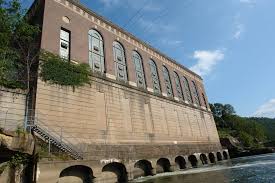 “Built in the early 1930s, the Hawks Nest Dam created a 250 acre lake on the New River near Ansted, WV. Water from the lake is diverted through a 3 mile long tunnel under Gauley Mountain to a hydroelectric facility on the other end.
“Built in the early 1930s, the Hawks Nest Dam created a 250 acre lake on the New River near Ansted, WV. Water from the lake is diverted through a 3 mile long tunnel under Gauley Mountain to a hydroelectric facility on the other end.
“For the first time since 1936, no water flows through the 3.1-mile long Hawks Nest Tunnel, leaving the hydroelectric turbines at the power plant it serves idle. “Until now, the tunnel has never been dewatered,” said Kevin Moriarty, area operations manager for Brookfield Renewable, the Canadian company that owns the Hawks Nest dam, tunnel and powerhouse.
“The hydropower project, still West Virginia’s largest, “has had a good, productive life for more than 80 years,” Moriarty said. “We thought now, rather than later, was the time for a check-up and to make a few repairs to make sure it’s good to go for the next 80 or 100 years.” (3:14/2020/SkyCamWV)
“WIND”
 “Power generation from wind energy is on the increase, but most of West Virginia’s wind energy potential is restricted to the narrow ridges in northeastern West Virginia. There are almost 700 megawatts of installed wind capacity in West Virginia, and, recently, wind energy contributed slightly more than hydropower to the state’s net electricity generation. Projects include Beech Ridge Energy, LLC (100.5 MW) operated by Invenergy Services, LLC in Greenbrier County; Laurel Mountain (97.6 MW) operated by AES Wind Generation, Inc. in Randolph County; Mountaineer Wind Energy Center (66 MW) operated by FPL Energy, LLC in Tucker County; NedPower Mount Storm (264 MW) operated by Shell Wind Energy, Inc. in Grant County; Pinnacle Wind Force, LLC (55 MW) operated by Edison Mission Energy in Mineral County; and New Creek (103 MW) operated by Enbridge in Grant County.”
“Power generation from wind energy is on the increase, but most of West Virginia’s wind energy potential is restricted to the narrow ridges in northeastern West Virginia. There are almost 700 megawatts of installed wind capacity in West Virginia, and, recently, wind energy contributed slightly more than hydropower to the state’s net electricity generation. Projects include Beech Ridge Energy, LLC (100.5 MW) operated by Invenergy Services, LLC in Greenbrier County; Laurel Mountain (97.6 MW) operated by AES Wind Generation, Inc. in Randolph County; Mountaineer Wind Energy Center (66 MW) operated by FPL Energy, LLC in Tucker County; NedPower Mount Storm (264 MW) operated by Shell Wind Energy, Inc. in Grant County; Pinnacle Wind Force, LLC (55 MW) operated by Edison Mission Energy in Mineral County; and New Creek (103 MW) operated by Enbridge in Grant County.”
Explore West Virginia Office of Energy’s “Renewable Energy” Website
“Wind Power 101”
“Wind Energy refers to technology that converts the air’s motion into mechanical energy usually for electricity production.” (1:46/2014/Student Energy)
“Wind Energy Basics”
![]() “Once called windmills, the technology used to harness the power of wind has advanced significantly over the past ten years, with the United States increasing its wind power capacity 30% year over year. Wind turbines, as they are now called, collect and convert the kinetic energy that wind produces into electricity to help power the grid . . .”
“Once called windmills, the technology used to harness the power of wind has advanced significantly over the past ten years, with the United States increasing its wind power capacity 30% year over year. Wind turbines, as they are now called, collect and convert the kinetic energy that wind produces into electricity to help power the grid . . .”
Explore US DOE EERE’s “Wind Energy Basics” Website – includes links to How Wind Turbines Work, How Distributed Wind Works, Advantages and Challenges of Wind, Wind Energy Use Throughout History, Current Research and Development, Wind Energy Benefits (slideshow), and Wind Energy Impacts (slideshow)
“Energy 101: Wind Power”
 “See how wind turbines generate clean electricity from the power of wind. The video highlights the basic principles at work in wind turbines, and illustrates how the various components work to capture and convert wind energy to electricity.” (3:16/2014/US DOE)
“See how wind turbines generate clean electricity from the power of wind. The video highlights the basic principles at work in wind turbines, and illustrates how the various components work to capture and convert wind energy to electricity.” (3:16/2014/US DOE)
“Energy 101: Wind Turbines”
 “See how wind turbines generate clean electricity from the power of the wind. Highlighted are the various parts and mechanisms of a modern wind turbine.” (2:17/2011/US DOE)
“See how wind turbines generate clean electricity from the power of the wind. Highlighted are the various parts and mechanisms of a modern wind turbine.” (2:17/2011/US DOE)
“What’s Inside a Wind Turbine?”
 “An overview of the layout of utility-class wind turbine generators – where are the major components, what do they do, and what differences can be found between models and size ranges.” (9:52/UVSAR/2010)
“An overview of the layout of utility-class wind turbine generators – where are the major components, what do they do, and what differences can be found between models and size ranges.” (9:52/UVSAR/2010)
“Wind Turbine Tour”
 “Puget Sound Energy’s Wild Horse Wind and Solar Facility features 149 wind turbines. This video tour takes you inside the 351-foot-tall wind turbines, giving a first hand look at how renewable energy works.” (2:38/2009/Puget Sound Energy)
“Puget Sound Energy’s Wild Horse Wind and Solar Facility features 149 wind turbines. This video tour takes you inside the 351-foot-tall wind turbines, giving a first hand look at how renewable energy works.” (2:38/2009/Puget Sound Energy)
“MidAmerican Energy Wind Farm Virtual Tour”
![]() (7:17/2015/ MidAmerican Energy)
(7:17/2015/ MidAmerican Energy)
“How to Build a Windfarm”
 “Every windmill in a huge wind farm needs to be put together piece by piece in a delicate procedure that takes the power of a machine and the precision of human hand.” (1:50/2014/Smithsonian Channel)
“Every windmill in a huge wind farm needs to be put together piece by piece in a delicate procedure that takes the power of a machine and the precision of human hand.” (1:50/2014/Smithsonian Channel)
“Wind Energy in West Virginia”
 “Find wind data and information in West Virginia, including maps, capacity, ordinances, and more…”
“Find wind data and information in West Virginia, including maps, capacity, ordinances, and more…”
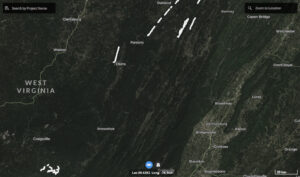
Explore Wind Exchange’s “Wind Energy in West Virginia” Website
“Power Plant and Wind Turbines – Mt. Storm, WV” (1:11/2010 / BabbittdaWabbitt)
“SOLAR”
“Glossary of Solar Energy Terms”
“Solar energy is cutting edge technology growing into mainstream power. You’ve probably seen a few panels on rooftops or attached to light poles along the highway. Maybe you have a few panels at home to help your family cut costs, or  maybe your school is working on a clean energy project. As this type of power becomes more popular and accessible, you’re going to see more of it, especially in new buildings. Understanding how it works now is important, but it will be even more important in a few years. That isn’t always easy, though, when professionals and scientists jump straight into jargon without stopping to explain. When people talk about solar power, they use a lot of technical terms, but you don’t have to be a scientist to keep up to speed. This quick glossary will help you understand exactly what teachers, techies, and installation pros are talking about. Once you understand the language, it’s easier to speak solar.”
maybe your school is working on a clean energy project. As this type of power becomes more popular and accessible, you’re going to see more of it, especially in new buildings. Understanding how it works now is important, but it will be even more important in a few years. That isn’t always easy, though, when professionals and scientists jump straight into jargon without stopping to explain. When people talk about solar power, they use a lot of technical terms, but you don’t have to be a scientist to keep up to speed. This quick glossary will help you understand exactly what teachers, techies, and installation pros are talking about. Once you understand the language, it’s easier to speak solar.”
Explore Solar Power Guide’s “Glossary of Solar Energy Terms” Website
“How Does Solar Work?”
![]() “The amount of sunlight that strikes the earth’s surface in an hour and a half is enough to handle the entire world’s energy consumption for a full year. Solar technologies convert sunlight into electrical energy either through photovoltaic (PV) panels or through mirrors that concentrate solar radiation. This energy can be used to generate electricity or be stored in batteries or thermal storage. . . “
“The amount of sunlight that strikes the earth’s surface in an hour and a half is enough to handle the entire world’s energy consumption for a full year. Solar technologies convert sunlight into electrical energy either through photovoltaic (PV) panels or through mirrors that concentrate solar radiation. This energy can be used to generate electricity or be stored in batteries or thermal storage. . . “
Explore US DOE EERE’s “How Does Solar Work” Website to continue reading – includes many links for more information
“Solar Radiation Basics”
![]() “Solar radiation, often called the solar resource or just sunlight, is a general term for the electromagnetic radiation emitted by the sun. Solar radiation can be captured and turned into useful forms of energy, such as heat and electricity, using a variety of technologies. However, the technical feasibility and economical operation of these technologies at a specific location depends on the available solar resource.”
“Solar radiation, often called the solar resource or just sunlight, is a general term for the electromagnetic radiation emitted by the sun. Solar radiation can be captured and turned into useful forms of energy, such as heat and electricity, using a variety of technologies. However, the technical feasibility and economical operation of these technologies at a specific location depends on the available solar resource.”
Explore US DOE EERE’s “Solar Radiation Basics” Website to continue reading – includes: Basic Principles; Diffuse and Direct Solar Radiation; Measurement, Distribution; and Solar Energy Resource Maps
“Solar Photovoltaic Technology Basics”
![]() “What is photovoltaic (PV) technology and how does it work? PV materials and devices convert sunlight into electrical energy. A single PV device is known as a cell. An individual PV cell is usually small, typically producing about 1 or 2 watts of power. These cells are made of different semiconductor materials and are often less than the thickness of four human hairs. In order to withstand the outdoors for many years, cells are sandwiched between protective materials in a combination of glass and/or plastics. . . “
“What is photovoltaic (PV) technology and how does it work? PV materials and devices convert sunlight into electrical energy. A single PV device is known as a cell. An individual PV cell is usually small, typically producing about 1 or 2 watts of power. These cells are made of different semiconductor materials and are often less than the thickness of four human hairs. In order to withstand the outdoors for many years, cells are sandwiched between protective materials in a combination of glass and/or plastics. . . “
Explore US DOE EERE’s “Solar Photovoltaic Technology Basics” Website to continue reading – includes links to: Solar Photovoltaic Cell Basics; Solar Photovoltaic System Design Basics; PV Cells 101: A Primer on the Solar Photovoltaic Cell; PV Cells 101 Part 2: Solar Photovoltaic Cell Research Directions; Solar Performance and Efficiency; and Getting the Most out of Solar Panels.
“Solar Power Basics”
 “This video summarizes the process of generating solar electricity from photovoltaic and concentrating solar power technologies. Research, manufacturing, and usage across the United States is also discussed.” (3:57/2015/US DOE)
“This video summarizes the process of generating solar electricity from photovoltaic and concentrating solar power technologies. Research, manufacturing, and usage across the United States is also discussed.” (3:57/2015/US DOE)
“Energy 101: Solar PV”
 “Solar photovoltaic (PV) systems can generate clean, cost-effective power anywhere the sun shines. This video shows how a PV panel converts the energy of the sun into renewable electricity to power homes and businesses.” (2:01/2011/US DOE)
“Solar photovoltaic (PV) systems can generate clean, cost-effective power anywhere the sun shines. This video shows how a PV panel converts the energy of the sun into renewable electricity to power homes and businesses.” (2:01/2011/US DOE)
“Energy 101: Concentrating Solar Power”
 “From towers to dishes to linear mirrors to troughs, concentrating solar power (CSP) technologies reflect and collect solar heat to generate electricity. A single CSP plant can generate enough power for about 90,000 homes. This video explains what CSP is, how it works, and how systems like parabolic troughs produce renewable power.” (2:17/2010/US DOE)
“From towers to dishes to linear mirrors to troughs, concentrating solar power (CSP) technologies reflect and collect solar heat to generate electricity. A single CSP plant can generate enough power for about 90,000 homes. This video explains what CSP is, how it works, and how systems like parabolic troughs produce renewable power.” (2:17/2010/US DOE)
“Solar Power 101”
 “Solar energy refers to technologies that convert the sun’s heat or light to another form of energy for use.” (1:00/2015/Student Energy)
“Solar energy refers to technologies that convert the sun’s heat or light to another form of energy for use.” (1:00/2015/Student Energy)
“Solar Voltaics 101
 “Solar Photovoltaic (PV) technology converts the sun’s energy into direct current electricity by using semiconductors.” (1:50/2015/Student Energy)
“Solar Photovoltaic (PV) technology converts the sun’s energy into direct current electricity by using semiconductors.” (1:50/2015/Student Energy)
“Solar Thermal 101”
“Solar Thermal technologies capture the heat energy from the sun and use it for heating and/or the production of electricity.” (2:47/2015/Student Energy)
“MidAmerican Energy Solar Farm Virtual Tour”
![]() (8:06/2015/MidAmerican Energy”
(8:06/2015/MidAmerican Energy”
“The Dam Has Broken And West Virginia Has Awoken To Solar Power”
May 16, 2021
 “The coal industry’s tight grip on West Virginia is loosening. That dam is cracking and is giving way to alternative fuels. Consider the case of Nitro Construction Services, which provides commercial and industrial businesses with electrical, mechanical, and technological services: the company is rooted in the coal industry but it is now ramping up its solar business.”
“The coal industry’s tight grip on West Virginia is loosening. That dam is cracking and is giving way to alternative fuels. Consider the case of Nitro Construction Services, which provides commercial and industrial businesses with electrical, mechanical, and technological services: the company is rooted in the coal industry but it is now ramping up its solar business.”
“Turning the corner in West Virginia”
September 11, 2021
![]()
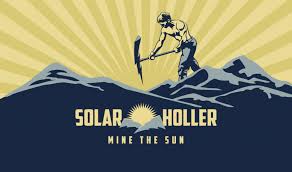 “Hard work and resilience are woven into the fabric of West Virginia. It’s in our blood. Our muscle and our mountains powered our nation through an industrial revolution, two world wars and an information revolution. . . “
“Hard work and resilience are woven into the fabric of West Virginia. It’s in our blood. Our muscle and our mountains powered our nation through an industrial revolution, two world wars and an information revolution. . . “
“BIOMASS”
“Biofuels”
 “Cellulosic ethanol from wood and wood residue or grasses such as switchgrass and other biofuels represent fuels that could originate in West Virginia and use West Virginia resources. Commercial cellulosic ethanol technologies will lead to increased demand for wood residue and small-diameter trees as well as a new chemical industry focus in West Virginia.”
“Cellulosic ethanol from wood and wood residue or grasses such as switchgrass and other biofuels represent fuels that could originate in West Virginia and use West Virginia resources. Commercial cellulosic ethanol technologies will lead to increased demand for wood residue and small-diameter trees as well as a new chemical industry focus in West Virginia.”
“Bioenergy Technology Office” – US Dept. of Energy
![]() “The U.S. Department of Energy’s Bioenergy Technologies Office (BETO) supports groundbreaking bioenergy technologies to produce industrially viable fuels, products, and power using renewable biomass and waste resources.”
“The U.S. Department of Energy’s Bioenergy Technologies Office (BETO) supports groundbreaking bioenergy technologies to produce industrially viable fuels, products, and power using renewable biomass and waste resources.”
Explore US DOE EERE’s “Bioenergy Technology Office” Website
“Biopower Basics”
![]() “Biopower technologies convert renewable biomass fuels into heat and electricity using processes similar to those used with fossil fuels. There are three ways to release the energy stored in biomass to produce biopower: burning, bacterial decay, and conversion to gas/liquid fuel.”
“Biopower technologies convert renewable biomass fuels into heat and electricity using processes similar to those used with fossil fuels. There are three ways to release the energy stored in biomass to produce biopower: burning, bacterial decay, and conversion to gas/liquid fuel.”
Explore US DOE EERE’s “Biopower Basics” Website – includes information on Burning, Bacterial Decomposition (Anaerobic Digestion), and Conversion to a Gas or Liquid Fuel
“Energy 101 – Biofuels”
![]() “Biomass is an organic renewable energy source that includes materials such as agriculture and forest residues, energy crops, and algae. Scientists and engineers at the U.S. Department of Energy and its national laboratories are finding new, more efficient ways to convert biomass into biofuels that can take the place of conventional fuels like gasoline, diesel, and jet fuel. This edition of Energy 101 shows how biomass is broken down and refined into sustainable biofuels via biochemical and thermochemical processes.” (2:56/2012/US DOE)
“Biomass is an organic renewable energy source that includes materials such as agriculture and forest residues, energy crops, and algae. Scientists and engineers at the U.S. Department of Energy and its national laboratories are finding new, more efficient ways to convert biomass into biofuels that can take the place of conventional fuels like gasoline, diesel, and jet fuel. This edition of Energy 101 shows how biomass is broken down and refined into sustainable biofuels via biochemical and thermochemical processes.” (2:56/2012/US DOE)
“Energy 101: Algae-to-Fuels”
![]() “As America takes steps to improve our energy security, home-grown fuel sources are more important that ever. One of the fuel sources of the future is algae, small aquatic organisms that convert sunlight into energy and store it in the form of oil. Scientists and engineers at the Energy Department and its national laboratories are researching the best strains of algae and developing the most efficient farming practices. This edition of Energy 101 shows how oil is extracted from algae and refined into sustainable biofuels.” (2:34/2012/US DOE)
“As America takes steps to improve our energy security, home-grown fuel sources are more important that ever. One of the fuel sources of the future is algae, small aquatic organisms that convert sunlight into energy and store it in the form of oil. Scientists and engineers at the Energy Department and its national laboratories are researching the best strains of algae and developing the most efficient farming practices. This edition of Energy 101 shows how oil is extracted from algae and refined into sustainable biofuels.” (2:34/2012/US DOE)
“Energy 101: Feedstocks for Biofuels and More”
![]() “See how organic materials like corn stover, wheat straw, and woody plants are being used to create homegrown biofuels in the United States—all while reducing our dependence on foreign oil and creating jobs in rural America.” (3:40/2013/US DOE)
“See how organic materials like corn stover, wheat straw, and woody plants are being used to create homegrown biofuels in the United States—all while reducing our dependence on foreign oil and creating jobs in rural America.” (3:40/2013/US DOE)
“Biomass 101”
 “Biomass or Bioenergy refers to the use of organic material to produce energy.” (3:38/2015/ Student Energy)
“Biomass or Bioenergy refers to the use of organic material to produce energy.” (3:38/2015/ Student Energy)
“Biofuels 101”
 “Biofuels are combustible fuels created from biomass.” (3:09/2015/ Student Energy)
“Biofuels are combustible fuels created from biomass.” (3:09/2015/ Student Energy)
“Biomass in West Virginia”
 “Biomass is a renewable energy source that can supplement fossil fuel energy sources. Reclaimed lands can serve as sites where suitable amounts of bioenergy crops such as switchgrass and Miscanthus can be grown. Learn about planting and growth of biomass crops on these lands and their potential for cellulosic ethanol production.”
“Biomass is a renewable energy source that can supplement fossil fuel energy sources. Reclaimed lands can serve as sites where suitable amounts of bioenergy crops such as switchgrass and Miscanthus can be grown. Learn about planting and growth of biomass crops on these lands and their potential for cellulosic ethanol production.”
Explore WVU Extension Service’s “Biomass in West Virginia” Website
“WVU researchers leading $10 million sustainable biomass to value-added bioproducts project”
![]() July 9, 2020
July 9, 2020
“As demand increases for sustainable and environmentally friendly energy and products, the Mid-Atlantic region with its abundance of forests and abandoned mine land is poised to grow its biomass-based renewable energy and products economy. . . “
Explore WVU Today’s “WVU researchers leading . . .” article to continue reading
“New River Clean Energy Project/Facility”

“New River Clean Energy Facility converting landfill gas to energy”
March 15, 2017
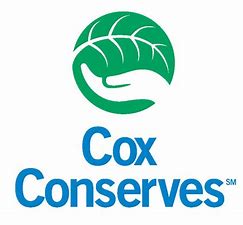 “Cox Enterprises announced today the completion of the New River Energy Facility in Beckley, W. Va. The facility captures landfill gas to generate energy and reduce methane emissions, which produces positive outcomes for the local community and the environment. The facility has the capacity to annually offset 14,200 tons of carbon and produce enough clean energy to power nearly 2,000 homes. . . “
“Cox Enterprises announced today the completion of the New River Energy Facility in Beckley, W. Va. The facility captures landfill gas to generate energy and reduce methane emissions, which produces positive outcomes for the local community and the environment. The facility has the capacity to annually offset 14,200 tons of carbon and produce enough clean energy to power nearly 2,000 homes. . . “
“New River Clean Energy Project kicks off with opening of new facility”
Jun 29, 2017
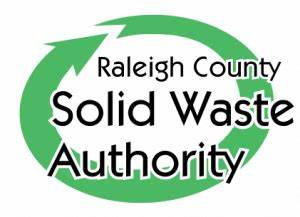 “
“ New, alternative fuel sources — a goal West Virginia is slowly striving for, and a goal the Raleigh County Solid Waste Authority is beginning to achieve. RCSWA hosted an open house and ribbon-cutting ceremony Wednesday for the building behind the company’s newest act — the New River Clean Energy Project. James Allen, executive director of RCSWA said the idea of the new project is based around transforming landfill gas — which is approximately 50 percent methane gas, into clean energy. . .”
New, alternative fuel sources — a goal West Virginia is slowly striving for, and a goal the Raleigh County Solid Waste Authority is beginning to achieve. RCSWA hosted an open house and ribbon-cutting ceremony Wednesday for the building behind the company’s newest act — the New River Clean Energy Project. James Allen, executive director of RCSWA said the idea of the new project is based around transforming landfill gas — which is approximately 50 percent methane gas, into clean energy. . .”
“GEOTHERMAL”
“Geothermal Resources”

 “Geothermal resources are reservoirs of hot water that exist at varying temperatures and depths below the Earth’s surface. Mile-or-more-deep wells can be drilled into underground reservoirs to tap steam and very hot water that can be brought to the surface for use in a variety of applications, including electricity generation, direct use, and heating and cooling.”
“Geothermal resources are reservoirs of hot water that exist at varying temperatures and depths below the Earth’s surface. Mile-or-more-deep wells can be drilled into underground reservoirs to tap steam and very hot water that can be brought to the surface for use in a variety of applications, including electricity generation, direct use, and heating and cooling.”
“Geothermal 101”
“Geothermal energy refers to the production of energy using the internal heat of the Earth’s crust.” (2:08/2015/Student Energy)
“Geothermal Basics”
![]() “Geothermal energy is thermal energy generated and stored in the Earth. Geothermal energy can manifest on the surface of the Earth, or near the surface of the Earth, where humankind may harness it to serve our energy needs.
“Geothermal energy is thermal energy generated and stored in the Earth. Geothermal energy can manifest on the surface of the Earth, or near the surface of the Earth, where humankind may harness it to serve our energy needs.
“Geothermal resources are reservoirs of hot water that exist at varying temperatures and depths below the Earth’s surface. Wells can be drilled into these underground reservoirs to tap steam and very hot water that can be brought to the surface for a variety of uses.”
Explore US Department of Energy’s “Geothermal Basics” Website – includes Electricity Production, Direct Use, Power Plants and more
“Energy 101: Geothermal Energy”
 “See how we can generate clean, renewable energy from hot water sources deep beneath the Earth’s surface. The video highlights the basic principles at work in geothermal energy production, and illustrates three different ways the Earth’s heat can be converted into electricity.” (3:48/2014/US DOE)
“See how we can generate clean, renewable energy from hot water sources deep beneath the Earth’s surface. The video highlights the basic principles at work in geothermal energy production, and illustrates three different ways the Earth’s heat can be converted into electricity.” (3:48/2014/US DOE)
“Energy 101: Geothermal Heat Pumps”
 “An energy-efficient heating and cooling alternative, the geothermal heat pump system moves heat from the ground to a building (or from a building to the ground) through a series of flexible pipe “loops” containing water.” (2:32/2011/US DOE)
“An energy-efficient heating and cooling alternative, the geothermal heat pump system moves heat from the ground to a building (or from a building to the ground) through a series of flexible pipe “loops” containing water.” (2:32/2011/US DOE)
(“The following edit was recommended by DOE’s Office of Energy Efficiency and Renewable Energy’s Geothermal Technologies Office: At :58, “During the winter, the air is usually cooler than the temperature below ground. The solution circulates in a loop underground and absorbs the Earth’s heat. This heat is brought to the surface and transferred to a heat pump. T̶h̶e̶ ̶h̶e̶a̶t̶ ̶p̶u̶m̶p̶ ̶w̶a̶r̶m̶s̶ ̶t̶h̶e̶ ̶a̶i̶r̶ ̶a̶n̶d̶ ̶y̶o̶u̶r̶ ̶r̶e̶g̶u̶l̶a̶r̶ ̶h̶e̶a̶t̶i̶n̶g̶ ̶s̶y̶s̶t̶e̶m̶ ̶w̶a̶r̶m̶s̶ ̶t̶h̶e̶ ̶a̶i̶r̶ ̶s̶o̶m̶e̶ ̶m̶o̶r̶e̶ ̶t̶o̶ ̶a̶ ̶c̶o̶m̶f̶o̶r̶t̶a̶b̶l̶e̶ ̶t̶e̶m̶p̶e̶r̶a̶t̶u̶r̶e̶.̶ ̶F̶i̶n̶a̶l̶l̶y̶ Ducts circulate the air to the various rooms.”)
“MidAmerican Energy Geothermal Plant Virtual Tour”
![]() (4:45/2015/ MidAmerican Energy)
(4:45/2015/ MidAmerican Energy)
“Geothermal Energy Research in West Virginia”
“Renewable Energy for the Mountain State”
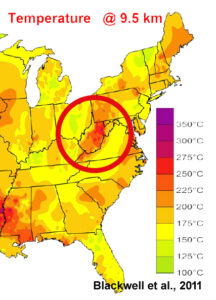
 “Heat is generated within the Earth. Generally, the deeper the hotter, with the core of the Earth being as hot as the sun’s surface . . . This heat makes its way close to the Earth’s surface in some places, as with the thermal springs in Appalachia, . . .”
“Heat is generated within the Earth. Generally, the deeper the hotter, with the core of the Earth being as hot as the sun’s surface . . . This heat makes its way close to the Earth’s surface in some places, as with the thermal springs in Appalachia, . . .”
Explore WV GES’ “Geothermal Energy Research in West Virginia” webpage to continue reading – includes many links for more information
“West Virginia Is a Geothermal Hot Spot”
October 4, 2010
“Researchers have uncovered the largest geothermal hot spot in the eastern United States. According to a unique collaboration between Google and academic geologists, West Virginia sits atop several hot patches of Earth, some as warm as 200 degrees Celsius and as shallow as 5 kilometers. If engineers are able to tap the heat, the state could become a producer of green energy for the region.
 “In 2004, researchers at Southern Methodist University (SMU) in Dallas, Texas, and colleagues created the Geothermal Map of North America. The map charted the potential for geothermal energy nationwide. Two years ago Google.org, the philanthropic arm of the search engine giant, hired the SMU scientists to update the map.
“In 2004, researchers at Southern Methodist University (SMU) in Dallas, Texas, and colleagues created the Geothermal Map of North America. The map charted the potential for geothermal energy nationwide. Two years ago Google.org, the philanthropic arm of the search engine giant, hired the SMU scientists to update the map.
“The group analyzed temperature data from oil and gas firms that no one had bothered to map. Those data were collected via single thermometer readings on the end of drilling equipment, but the readings were artificially low because of water used to cool and wash the equipment. So the SMU team corrected the readings according to the rock type that was being drilled. Then the researchers estimated the temperatures of adjacent rock layers according to their geologic properties.
“The work revealed surprising results for West Virginia, a state that had only four data points in the 2004 map. The Google.org-funded effort added measurements from more than 1450 wells in the state. The warm spots were found at depths of 3 to 8 kilometers over an 18,700-square-kilometer area. By comparison, geothermal hot spots in Nevada reach 200 degrees Celsius at 2 kilometers below the surface, and steam produced from them runs turbines to create electricity. Iceland, meanwhile, has 200 degrees Celsius temperatures just below the surface and uses warm water to heat buildings and showers throughout Reykjavik and elsewhere. . . “
October 4, 2010
“West Virginia is hot bed for geothermal resources: Green energy source in coal country, says Google-funded SMU research”
 “New research produced by Southern Methodist University’s Geothermal Laboratory, funded by a grant from Google.org, suggests that the temperature of the Earth beneath the state of West Virginia is significantly higher than previously estimated and capable of supporting commercial baseload geothermal energy production. . . “
“New research produced by Southern Methodist University’s Geothermal Laboratory, funded by a grant from Google.org, suggests that the temperature of the Earth beneath the state of West Virginia is significantly higher than previously estimated and capable of supporting commercial baseload geothermal energy production. . . “
Explore SMU’s “West Virginia is hot bed for . . . ” Website to continue reading
“Feasibility of Deep Direct Use Geothermal on the WVU Campus – Morgantown, WV”
![]() “. . . The target location of the WVU campus in Morgantown, West Virginia, affords an optimal and unique combination of critical factors necessary to develop deep direct use geothermal. The proposed system is unique because it will allow for utilization of the geothermal heat as both heating and an energy source. . .”
“. . . The target location of the WVU campus in Morgantown, West Virginia, affords an optimal and unique combination of critical factors necessary to develop deep direct use geothermal. The proposed system is unique because it will allow for utilization of the geothermal heat as both heating and an energy source. . .”
Explore US DOE’s “Feasibility of Deep . . .” Website (pdf)
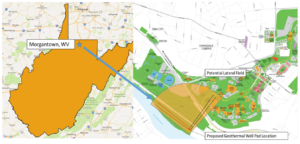
“Drilling for Geothermal Data in West Virginia”
 “Dr. Nagasree Garapati is leading a team of WVU researchers who will gather data from an exploratory borehole well near Morgantown in 2023. Funded by the U.S. Department of Energy, the team will provide the first geological data on whether geothermal reservoirs can be a clean energy source for parts of West Virginia and . . .”
“Dr. Nagasree Garapati is leading a team of WVU researchers who will gather data from an exploratory borehole well near Morgantown in 2023. Funded by the U.S. Department of Energy, the team will provide the first geological data on whether geothermal reservoirs can be a clean energy source for parts of West Virginia and . . .”
Explore WVU’s “Geothermal” Website
“HYDROGEN”
“Hydrogen 101”
“Hydrogen is a gaseous element that is both odorless and colorless. Hydrogen contains a large amount of energy in its chemical bond giving it potential as an energy carrier.” (3:22/2015/Student Energy)
“Energy 101: Fuel Cell Technology”
 “Learn how fuel cell technology generates clean electricity from hydrogen to power our buildings and transportation—while emitting nothing but water. This video illustrates the fundamentals of fuel cell technology and its potential to supply our homes, offices, industries, and vehicles with sustainable, reliable energy.” (4:05/2014/US Department of Energy)
“Learn how fuel cell technology generates clean electricity from hydrogen to power our buildings and transportation—while emitting nothing but water. This video illustrates the fundamentals of fuel cell technology and its potential to supply our homes, offices, industries, and vehicles with sustainable, reliable energy.” (4:05/2014/US Department of Energy)
“Why This Hydrogen Breakthrough Matters”
 “Hydrogen is number one on the periodic table, but it’s still a straggler in the renewable energy race. Like many other renewable technologies, hydrogen has dominated headlines for years now, but inefficiencies in the production and storage of green hydrogen hold it back. There’s a lot of pieces to the hydrogen puzzle and one of those pieces, a hydrogen electrolyzer, has had some recent breakthroughs that may help with producing green hydrogen. Is green hydrogen within reach? Let’s see if we can come to a decision on this.” (11:45/2022/Undecided with Matt Ferrell)
“Hydrogen is number one on the periodic table, but it’s still a straggler in the renewable energy race. Like many other renewable technologies, hydrogen has dominated headlines for years now, but inefficiencies in the production and storage of green hydrogen hold it back. There’s a lot of pieces to the hydrogen puzzle and one of those pieces, a hydrogen electrolyzer, has had some recent breakthroughs that may help with producing green hydrogen. Is green hydrogen within reach? Let’s see if we can come to a decision on this.” (11:45/2022/Undecided with Matt Ferrell)
“NUCLEAR”
“Nuclear Energy 101”
“Nuclear energy is released from the nucleus of atoms through the processes of fission or fusion.” (2:56/2015/Student Energy)
“Energy 101: Small Modular Reactors”
 “Advanced small modular reactors could change the way we think about reliable, clean and affordable nuclear power. Instead of going big, scientists and engineers went small developing mini reactors that are roughly a third of the size of a typical nuclear power plant. That means America’s largest clean energy source could be coming to a market near you—making nuclear more scalable and flexible than ever before. Advanced SMRs offer many advantages, such as relatively small size, reduced capital investment, ability to be sited in locations not possible for larger nuclear plants, and provisions for incremental power additions. SMRs also offer distinct safeguards, security and nonproliferation advantages. The U.S. Department of Energy is supporting the development and deployment of advanced SMRs to help meet the nation’s economic, environmental and energy security needs.” (1:57/2020/US Department of Energy)
“Advanced small modular reactors could change the way we think about reliable, clean and affordable nuclear power. Instead of going big, scientists and engineers went small developing mini reactors that are roughly a third of the size of a typical nuclear power plant. That means America’s largest clean energy source could be coming to a market near you—making nuclear more scalable and flexible than ever before. Advanced SMRs offer many advantages, such as relatively small size, reduced capital investment, ability to be sited in locations not possible for larger nuclear plants, and provisions for incremental power additions. SMRs also offer distinct safeguards, security and nonproliferation advantages. The U.S. Department of Energy is supporting the development and deployment of advanced SMRs to help meet the nation’s economic, environmental and energy security needs.” (1:57/2020/US Department of Energy)
“These Mini Nuclear Reactors Can be Built Anywhere”

 “Good things come in small packages.” (9:52/2022/Tomorrow’s Build)
“Good things come in small packages.” (9:52/2022/Tomorrow’s Build)
FOSSIL FUELS
 “Fossil fuel is a term used to describe a group of energy sources that were formed when ancient plants and organisms were subject to intense heat and pressure over millions of years.” (2:42/2015/Student Energy)
“Fossil fuel is a term used to describe a group of energy sources that were formed when ancient plants and organisms were subject to intense heat and pressure over millions of years.” (2:42/2015/Student Energy)
“OIL AND NATURAL GAS”
From Wikipedia: “Hydrocarbons are economically important because major fossil fuels such as coal, petroleum and natural gas, and its derivatives such as plastics, paraffin, waxes, solvents and oils are hydrocarbons. Extracted hydrocarbons in a liquid form are referred to as petroleum (literally “rock oil”) or mineral oil, whereas hydrocarbons in a gaseous form are referred to as natural gas.”
“History of West Virginia Mineral Industries – Oil and Gas”
![]() “The oil and gas industry in West Virginia actually began as an outgrowth of the salt industry.”
“The oil and gas industry in West Virginia actually began as an outgrowth of the salt industry.”
“Burning Springs – A History of the Oil and Gas Industry”

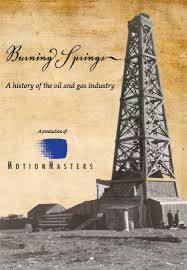 “Examine the impact of the discovery and production of natural gas on the social, political, and economic history of western Virginia and West Virginia. Learn the processes used to find and access gas deposits and the relationship between natural gas and saline deposits.”
“Examine the impact of the discovery and production of natural gas on the social, political, and economic history of western Virginia and West Virginia. Learn the processes used to find and access gas deposits and the relationship between natural gas and saline deposits.”
A preview of the one hour documentary “Burning Springs” about the oil and gas industry in WV. (1:19/2014/Motion Masters)
Short excerpt from “Burning Springs” documentary (2:51/2011/WV Public Broadcasting)
A longer excerpt from “Burning Springs” documentary (10:57/2014/MotionMasters)
“Oil and natural gas: The rise of West Virginia . . .”
 “The history of the oil and natural gas industry worldwide is closely linked to the industry’s birth, growth and expansion in West Virginia. … In fact, the world’s petroleum industry had its roots in West Virginia.” That statement, from the foreword of “A Century of Service,” a history of the West Virginia Oil and Natural Gas Association, starts. . .”
“The history of the oil and natural gas industry worldwide is closely linked to the industry’s birth, growth and expansion in West Virginia. … In fact, the world’s petroleum industry had its roots in West Virginia.” That statement, from the foreword of “A Century of Service,” a history of the West Virginia Oil and Natural Gas Association, starts. . .”

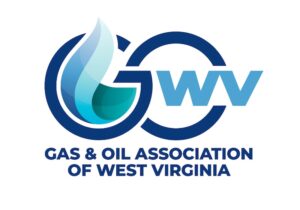 Members of the Independent Oil and Gas Association of West Virginia (IOGAWV) and West Virginia Oil and Natural Gas Association (WVONGA) voted to merge into one organization — the Gas and Oil Association of WV (GO-WV) in December 2020. [GO-WV is an industry political advocacy organization]
Members of the Independent Oil and Gas Association of West Virginia (IOGAWV) and West Virginia Oil and Natural Gas Association (WVONGA) voted to merge into one organization — the Gas and Oil Association of WV (GO-WV) in December 2020. [GO-WV is an industry political advocacy organization]
Explore “Gas and Oil Association of West Virginia” Commercial Website
“The History of Union Carbide in Kanawha County, WV”

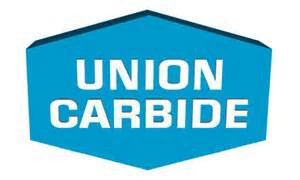 “The first commercial ethylene plant in the world was established in Clendenin, WV in 1920 by Union Carbide, and is regarded as the origin of the petrochemical industry.””In 1923, Union Carbide began production of several ethylene-based chemicals in South Charleston. Under Union Carbide’s leadership, the industry fostered a world-class research technology park. Union Carbide has since merged with DOW Chemical, and the research was moved to other areas of the country.” (10:29/@1990/MotionMasters)
“The first commercial ethylene plant in the world was established in Clendenin, WV in 1920 by Union Carbide, and is regarded as the origin of the petrochemical industry.””In 1923, Union Carbide began production of several ethylene-based chemicals in South Charleston. Under Union Carbide’s leadership, the industry fostered a world-class research technology park. Union Carbide has since merged with DOW Chemical, and the research was moved to other areas of the country.” (10:29/@1990/MotionMasters)
“Oil and Gas Formation”
 “A fast paced explanation of how many oil and gas deposits form and how we explore for them.” (3:04/2014/ EarthScience WesternAustralia
“A fast paced explanation of how many oil and gas deposits form and how we explore for them.” (3:04/2014/ EarthScience WesternAustralia
“MidAmerican Energy Combustion-Fueled Power Plant Virtual Tour”
(![]() 7:06/2015/ MidAmerican Energy)
7:06/2015/ MidAmerican Energy)
“Posters: Natural Gas and Oil” – US Dept. of Energy
“Animated map of the major oil and gas pipelines in the US”
 “The United States is the world’s largest consumer of oil, using over 19 million barrels a day in 2014. This high level of consumption wouldn’t be possible without the 2.5 million mile network of pipeline used to transport the fuel from its source to the market.” (3:15/2015/Business Insider)
“The United States is the world’s largest consumer of oil, using over 19 million barrels a day in 2014. This high level of consumption wouldn’t be possible without the 2.5 million mile network of pipeline used to transport the fuel from its source to the market.” (3:15/2015/Business Insider)
“OIL”
 “West Virginia’s first oil field began producing just before the Civil War, and peak production of 16 million barrels per year was reached in 1900. Although the state’s annual crude oil production in the 21st century is much less than 1% of the nation’s total . . .”
“West Virginia’s first oil field began producing just before the Civil War, and peak production of 16 million barrels per year was reached in 1900. Although the state’s annual crude oil production in the 21st century is much less than 1% of the nation’s total . . .”
Explore West Virginia Office of Energy’s “Petroleum” Website to continue reading
<<For information about products made in West Virginia from Oil and Gas, see MH3WV’s “Made / Grown in WV” page>>
“Oil 101”
 “Oil is a fossil fuel and liquid hydrocarbon used mainly for the production of transportation fuels and petroleum-based products.” (2:16/2015/Student Energy)
“Oil is a fossil fuel and liquid hydrocarbon used mainly for the production of transportation fuels and petroleum-based products.” (2:16/2015/Student Energy)
“Looking Down an Oil Well”
 “Ever wonder what oil looks like underground, down deep, hundreds or thousands of feet below the surface, buried under millions of tons of rock and dirt? If you could look down an oil well and see oil where Nature created it, you might be surprised. . .”
“Ever wonder what oil looks like underground, down deep, hundreds or thousands of feet below the surface, buried under millions of tons of rock and dirt? If you could look down an oil well and see oil where Nature created it, you might be surprised. . .”
Explore information from US Dept. of Energy’s “Looking Down an Oil Well” Website to continue reading (pdf) – includes: Squeezing Oil out of Rocks; Washing More Oil from Rocks; and Soap, Bugs and Other Ways to Produce Oil
“Petroleum refining processes explained simply”
(2:48/2018/ Production Technology)
“NATURAL GAS”
 “West Virginia is in the leading natural gas-producing area in the nation, and the state’s natural gas production has increased with the development of the Marcellus Shale. West Virginia is the eighth-largest natural gas-producing state in the nation . . .”
“West Virginia is in the leading natural gas-producing area in the nation, and the state’s natural gas production has increased with the development of the Marcellus Shale. West Virginia is the eighth-largest natural gas-producing state in the nation . . .”
Explore West Virginia Office of Energy’s “Natural Gas” Website to continue reading
“Natural Gas 101”
 “Natural Gas is a flammable gas, consisting mainly of methane (CH4), occurring in underground reservoirs, often with oil.” (3:38/2015/Student Energy)
“Natural Gas is a flammable gas, consisting mainly of methane (CH4), occurring in underground reservoirs, often with oil.” (3:38/2015/Student Energy)
“Natural Gas – Fueling the Blue Flame”
 “Natural Gas: It is colorless, shapeless, and in its pure form, odorless. For many years, it was discarded as worthless. Even today, some countries (although not the United States) still get rid of it by burning it in giant flares, so large they can be seen from the Space Shuttle. Yet, it is one of the most valuable fuels we have.”
“Natural Gas: It is colorless, shapeless, and in its pure form, odorless. For many years, it was discarded as worthless. Even today, some countries (although not the United States) still get rid of it by burning it in giant flares, so large they can be seen from the Space Shuttle. Yet, it is one of the most valuable fuels we have.”
Explore information from US Dept. of Energy’s “Natural Gas – Fueling the Blue Flame” Website to continue reading (pdf) – includes: The History of Natural Gas; and Getting Gas from the Ground . . . and the Sea.
“The Journey of Natural Gas”
![]() “Natural gas is fundamental to our way of life – we use it for cooking, heating, electricity and power. Over 90% of the natural gas used in Queensland [Australia] comes from coal seams, but how is it formed and how is it produced? Take a look at how we go about developing our coal seam gas resources safely and sustainably, as we build a new industry that will power the Queensland economy for many years to come.” (7:11/2014/Santos GLNG)
“Natural gas is fundamental to our way of life – we use it for cooking, heating, electricity and power. Over 90% of the natural gas used in Queensland [Australia] comes from coal seams, but how is it formed and how is it produced? Take a look at how we go about developing our coal seam gas resources safely and sustainably, as we build a new industry that will power the Queensland economy for many years to come.” (7:11/2014/Santos GLNG)
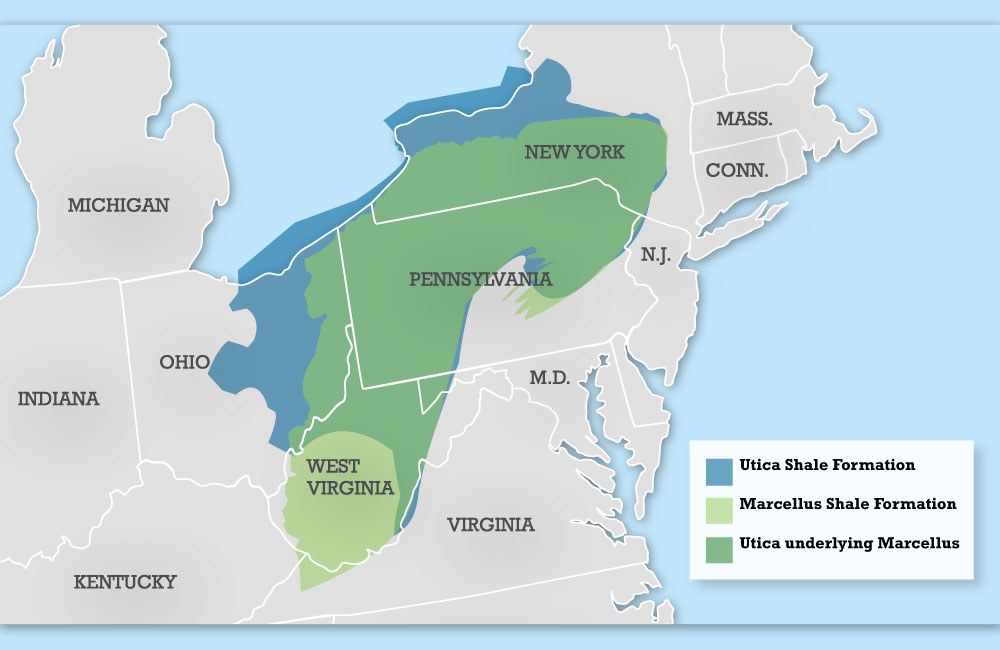 “The liquids-rich content of West Virginia’s Marcellus and Utica shale gas has returned West Virginia to its chemical industry roots.”
“The liquids-rich content of West Virginia’s Marcellus and Utica shale gas has returned West Virginia to its chemical industry roots.”
“Shale Gas 101”
 “This webpage has been developed to answer the many questions that people have about shale gas and hydraulic fracturing (or fracking). The information provided below explains the basics, including what shale gas is, where it’s found, why it’s important, how it’s produced, and challenges associated with production.”
“This webpage has been developed to answer the many questions that people have about shale gas and hydraulic fracturing (or fracking). The information provided below explains the basics, including what shale gas is, where it’s found, why it’s important, how it’s produced, and challenges associated with production.”
Explore US DOE’s “Shale Gas 101” Website as found on Archive.org’s “Wayback Machine – includes numerous links to Shale Gas Basics and FAQs – [as this is an archived version of the webpage, some links may not work]
“Horizontal Drilling”
 “After a well-site has been carefully prepared to meet environmental health and safety standards, drilling can begin. In this video, we walk you through Chesapeake Energy’s process for horizontal drilling in natural gas operations.” (5:58/2012/Chesapeake Energy)
“After a well-site has been carefully prepared to meet environmental health and safety standards, drilling can begin. In this video, we walk you through Chesapeake Energy’s process for horizontal drilling in natural gas operations.” (5:58/2012/Chesapeake Energy)
From Wikipedia: “A proppant is a solid material, typically treated sand or man-made ceramic materials, designed to keep an induced hydraulic fracture open, during or following a fracturing treatment. It is added to a fracking fluid which may vary in composition depending on the type of fracturing used, and can be gel, foam or slickwater-based. In addition, there may be unconventional fracking fluids. Fluids make tradeoffs in such material properties as viscosity, where more viscous fluids can carry more concentrated proppant; the energy or pressure demands to maintain a certain flux pump rate (flow velocity) that will conduct the proppant appropriately; pH, various rheological factors, among others. In addition, fluids may be used in low-volume well stimulation of high-permeability sandstone wells (20k to 80k gallons per well) to the high-volume operations such as shale gas and tight gas that use millions of gallons of water per well.”
“Hydraulic Fracturing 101”
 “Hydraulic fracturing is an oil and gas production technique used in tight geologic formations that involves horizontal directional drilling of wells as well as the use of water, sand and chemicals at high pressures to fracture rock and release hydrocarbons.” (2:08/2015/Student Energy)
“Hydraulic fracturing is an oil and gas production technique used in tight geologic formations that involves horizontal directional drilling of wells as well as the use of water, sand and chemicals at high pressures to fracture rock and release hydrocarbons.” (2:08/2015/Student Energy)
“Hydraulic Fracturing”
 “Following the drilling, fracturing (fracking) begins.” (3:34/2012/Chesapeake Energy)
“Following the drilling, fracturing (fracking) begins.” (3:34/2012/Chesapeake Energy)
“Animation of Hydraulic Fracturing (fracking)”
 “Safe, cost-effective refinements in hydraulic fracturing (also known as fracking), horizontal drilling and other innovations now allow for the production of oil and natural gas from tight shale formations that previously were inaccessible. This video introduces the proven techniques used to extract resources from shale formations in a safe, environmentally responsible manner.” (6:36/2012/Marathon Oil)
“Safe, cost-effective refinements in hydraulic fracturing (also known as fracking), horizontal drilling and other innovations now allow for the production of oil and natural gas from tight shale formations that previously were inaccessible. This video introduces the proven techniques used to extract resources from shale formations in a safe, environmentally responsible manner.” (6:36/2012/Marathon Oil)
“What is Cracking? Dow Chemical Builds New Ethylene Production Plant at Dow Texas Operations”
 (2:23/2012/Dow Chemical)
(2:23/2012/Dow Chemical)
“Hydrocarbon Cracking and Why It Is Done”
 “Learn the basics about the cracking of hydrocarbons and why it is done.” (Video can be somewhat technical–don’t worry about alkenes and alkanes, etc–just watch for the basics.) (3:49/2013/The Fuse School-UK) (Lorries = Trucks Petrol = Gasoline)
“Learn the basics about the cracking of hydrocarbons and why it is done.” (Video can be somewhat technical–don’t worry about alkenes and alkanes, etc–just watch for the basics.) (3:49/2013/The Fuse School-UK) (Lorries = Trucks Petrol = Gasoline)
“Liquid Natural Gas (LNG) 101”
 “Liquefied natural gas (LNG) is natural gas that has been converted liquefied for ease of storage or transport.” (2:23/2015/Student Energy)
“Liquefied natural gas (LNG) is natural gas that has been converted liquefied for ease of storage or transport.” (2:23/2015/Student Energy)
“Liquified Natural Gas: From Treatment To Transport | ExxonMobil”
![]() “Natural gas will be the world’s fastest-growing energy source by 2040 thanks to its versatility, abundance and clean-burning qualities. There are an immense number of opportunities to cultivate, produce, transport and distribute this impactful resource to communities around the world, providing much-needed energy to those that need it. Natural gas has the potential to change how we think about power and the value it provides on a global scale.” (4:13/2016/ExxonMobil)
“Natural gas will be the world’s fastest-growing energy source by 2040 thanks to its versatility, abundance and clean-burning qualities. There are an immense number of opportunities to cultivate, produce, transport and distribute this impactful resource to communities around the world, providing much-needed energy to those that need it. Natural gas has the potential to change how we think about power and the value it provides on a global scale.” (4:13/2016/ExxonMobil)
“Marcellus to Manufacturing”
 “West Virginia Marcellus to Manufacturing (M2M), Ethane Development Conference was held in March 2014. This conference explored the impact of the Marcellus Shale on the economics and workforce in West Virginia.” (4:12/2014/ WV Commerce)
“West Virginia Marcellus to Manufacturing (M2M), Ethane Development Conference was held in March 2014. This conference explored the impact of the Marcellus Shale on the economics and workforce in West Virginia.” (4:12/2014/ WV Commerce)
“COAL”
“History of West Virginia Mineral Industries – Coal”
![]() “In 1742, John Peter Salley took an exploratory trip across the Allegheny Mountains and reported an outcropping of coal along a tributary of the Kanawha River. He and his companions named this tributary the Coal River, and his report became the first reference to coal in what is today West Virginia.”
“In 1742, John Peter Salley took an exploratory trip across the Allegheny Mountains and reported an outcropping of coal along a tributary of the Kanawha River. He and his companions named this tributary the Coal River, and his report became the first reference to coal in what is today West Virginia.”
“Coal 101”
 “Coal is a combustible black or dark brown rock consisting of carbonized plant matter, found mainly in underground deposits and widely for electricity production.” (2:49/2015/Student Energy)
“Coal is a combustible black or dark brown rock consisting of carbonized plant matter, found mainly in underground deposits and widely for electricity production.” (2:49/2015/Student Energy)
“Posters: Coal” – US Dept. of Energy
“Coal is Our Most Important Fuel”
 “America has more coal than any other fossil fuel resource. The United States also has more coal reserves than any other single country in the world. In fact, just over 1/4 of all the known coal in the world is in the United States. The United States has more coal that can be mined than the rest of the world has oil that can be pumped from the ground. . . “
“America has more coal than any other fossil fuel resource. The United States also has more coal reserves than any other single country in the world. In fact, just over 1/4 of all the known coal in the world is in the United States. The United States has more coal that can be mined than the rest of the world has oil that can be pumped from the ground. . . “
Explore information from US Dept. of Energy’s “Coal is our Most Important Fuel” Website to continue reading (pdf) – includes A Brief History of Coal Use, Coal Mining and Transportation, Cleaning Up Coal, The Clean Coal Technology Program, Knocking the NOx out of Coal, A “Bed” for Burning Coal, and The Cleanest Coal Technology – a Real Gas!
“Types of Coal Mines”
 “A surface mine is developed where a coal seam lies near the surface of the ground. For underground mining in hilly terrain, a drift mine may be opened where the entry can be driven horizontally; a slope mine where the entry must be driven at an angle—upward or downward—to reach the coal. A vertical shaft mine is opened on level terrain.”
“A surface mine is developed where a coal seam lies near the surface of the ground. For underground mining in hilly terrain, a drift mine may be opened where the entry can be driven horizontally; a slope mine where the entry must be driven at an angle—upward or downward—to reach the coal. A vertical shaft mine is opened on level terrain.”
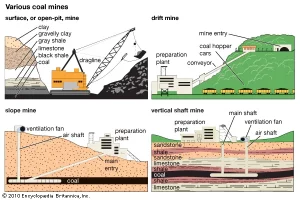
Explore Encyclopedia Britannica Kids’ ”Various Coal Mines” Commercial Website
Explore “Encyclopedia Britannica Kids” Commercial Website
“Coal Mining”
 Underground at a mine in Southwestern PA and Northern WV (5:43 / 2010)
Underground at a mine in Southwestern PA and Northern WV (5:43 / 2010)
“Pioneering Underground Mining”
 Joy Mining Machinery demonstrates the “Joy Loader” and explains the difference between room and pillar and longwall mining. (8:48/2012 / Joy Mining Machinery)
Joy Mining Machinery demonstrates the “Joy Loader” and explains the difference between room and pillar and longwall mining. (8:48/2012 / Joy Mining Machinery)
“Riding a diesel mantrip thru a West Virginia coal mine”
“Riding a Brookville diesel mantrip in an older sagging section of a West Virginia coal mine.” (1:30/2017/ Jason Goddard)
“Take A Ride Into A Mine”
 “Bob Simon is reporting on the coal industry and some of the hazards miners face. As part of the report, “60 Minutes” went deep into a mine.” (4:08/2007 / CBS News)
“Bob Simon is reporting on the coal industry and some of the hazards miners face. As part of the report, “60 Minutes” went deep into a mine.” (4:08/2007 / CBS News)
“Underground Mining”
![]() (4:33/2012 / Sunrise Coal)
(4:33/2012 / Sunrise Coal)
“Room & Pillar Mining Process”
![]() “When it comes to underground mining, there are different ways to approach removing coal, depending its structure and location. “Room and pillar is a non-subsidence plan for a mine, preserving the precious farmland above. It is among the safest and one of the most ecologically-friendly approaches to mining coal today, creating a non-subsidence environment (no movement of land) and maintaining clean water standards.
“When it comes to underground mining, there are different ways to approach removing coal, depending its structure and location. “Room and pillar is a non-subsidence plan for a mine, preserving the precious farmland above. It is among the safest and one of the most ecologically-friendly approaches to mining coal today, creating a non-subsidence environment (no movement of land) and maintaining clean water standards.
“As the name indicates, large pillars of coal (40 feet wide) are left standing to help support the roof of the mine—more than half of the coal remains intact as supporting pillars to maintain the integrity of the surface land. The end result is a grid of open space (rooms) cleared by a continuous miner machine and separated by pillars. Once the coal is cleared and placed on a conveyor belt, roof bolters enter the new area to secure the roof, inserting fully grouted 6-foot metal rods every four feet.” (1:38/2014 / Sunrise Coal)
“Principles of Longwall Mining”
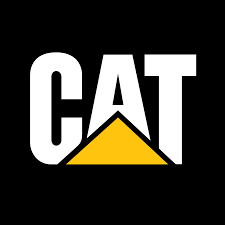 “This video provides a basic description of the longwall mining method for extracting coal underground. It includes an explanation of the different products/key components of a longwall mining system (longwall shearer, automated plow system, AFC face conveyor, line pans, CST drive system, roof supports, longwall automation).” (3:26/2012 / CAT Mining)
“This video provides a basic description of the longwall mining method for extracting coal underground. It includes an explanation of the different products/key components of a longwall mining system (longwall shearer, automated plow system, AFC face conveyor, line pans, CST drive system, roof supports, longwall automation).” (3:26/2012 / CAT Mining)
“Bailey Coal Mine in Wind Ridge PA serves up 45,000 tons of coal per day”
Shows Longwall Mining in extreme southwestern PA and WV Northern Panhandle. (1:39/2011 / NewsWorks)
“Highwall Mining”
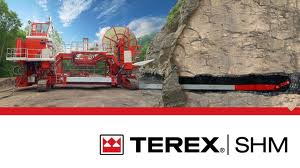 “The Highwall Mining system, the Terex SHM Highwall Miner is the most advanced, reliable, and efficient highwall mining system in the world. It is the first practical highwall mining system capable of mining parallel entries to predetermined depths, thus linking surface and underground operations to maximize coal recovery and profits. Terex SHM’s innovative highwall mining system and extensive customer care have kept our clients at the forefront of highwall mining technology and profitability.” (8:51/2008/Terex SHM)
“The Highwall Mining system, the Terex SHM Highwall Miner is the most advanced, reliable, and efficient highwall mining system in the world. It is the first practical highwall mining system capable of mining parallel entries to predetermined depths, thus linking surface and underground operations to maximize coal recovery and profits. Terex SHM’s innovative highwall mining system and extensive customer care have kept our clients at the forefront of highwall mining technology and profitability.” (8:51/2008/Terex SHM)
“Where Does Our Coal Come From?” – Open Pit/Surface Mining
 “Did you know coal supplies nearly half of America’s electricity? Visit Black Thunder Mine in Wyoming’s Powder River Basin with Yul Kwon and discover how we mine this pivotal material.” Shows open pit/surface mining. (6:44/2012 / PBS)
“Did you know coal supplies nearly half of America’s electricity? Visit Black Thunder Mine in Wyoming’s Powder River Basin with Yul Kwon and discover how we mine this pivotal material.” Shows open pit/surface mining. (6:44/2012 / PBS)
“The Land of Mountaintop Removal”
![]() “Over five hundred mountains in West Virginia have been destroyed because of new mining techniques used by coal companies in the Appalachians.” (2:57/2013 / Smithsonian Channel)
“Over five hundred mountains in West Virginia have been destroyed because of new mining techniques used by coal companies in the Appalachians.” (2:57/2013 / Smithsonian Channel)
“Coal Preparation Plant”
From Wikipedia: “A coal preparation plant (CPP) is a facility that washes coal of soil and rock, crushes it into graded sized chunks (sorting), stockpiles grades preparing it for transport to market, and more often than not, also loads coal into rail cars, barges, or ships. A CPP may also be called a coal handling and preparation plant (CHPP), coal handling plant, prep plant, tipple or wash plant. The more of this waste material that can be removed from coal, the lower its total ash content, the greater its market value and the lower its transportation costs.”
“The Heart of the Mine”
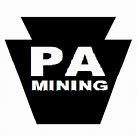 “A look at the processing, cleaning and separation process of anthracite coal from inside an operational anthracite coal preparation plant.” (14:24/2014 / PAMining)
“A look at the processing, cleaning and separation process of anthracite coal from inside an operational anthracite coal preparation plant.” (14:24/2014 / PAMining)
“Coal Tipple”
From Wikipedia: “A tipple is a structure used at a mine to load the extracted product (e.g., coal, ores) for transport, typically into railroad hopper cars. In the United States, tipples have been frequently associated with coal mines, but they have also been used for hard rock mining.
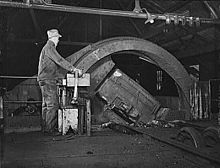 Rotary dump which empties coal cars into a chute which conveys the coal to railroad cars beneath. (circa.1942)
Rotary dump which empties coal cars into a chute which conveys the coal to railroad cars beneath. (circa.1942)
Diagram of a rotary dumper
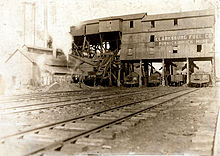
A coal tipple in Clarksburg, West Virginia, in 1908.
“Basic coal tipples simply loaded coal into railroad cars. Many tipples had simple screening equipment to sort coal pieces by size before loading. Today, a coal mine facility usually includes a coal preparation plant which washes coal of soil and rock, before loading it for transport to market. The term tipple may be used interchangeably with coal prep plant.
“Tipples were initially used with minecarts, also called tubs or tram cars, or mine cars in the U.S. These were small hopper cars that carried the product on a mine railway out of the mine. When a mine car entered the upper level of the tipple, its contents were dumped through a chute leading to a railroad hopper car positioned on a track running beneath the tipple. At some facilities, each car was tipped over manually—thus the name, “tipple.” In higher volume facilities, each car was placed in a machine called a rotary dump, which rotated the car to dump the coal.
“In the early 20th century, mine operators began using conveyor belts to load coal and ores into railroad cars, eliminating the use of mine cars. At some mines, the conveyor loading facility is still referred to as a tipple.”
“Coal Loading”
“Two cars loading coal at a mine in Colorado. It’s a bit boring when you have to watch over a hundred cars load, but kinda interesting to see two… lol.” (3:28/2011 / Ken Dawg)
“The Final Stage Coal Car Loading”
 “This is the final phase of coal mining/processing. A look at the operators’ station inside the loading silo as a train pulling 98 bottom dump cars gets loaded with bituminous coal.” (5:12/2011 / PA Mining)
“This is the final phase of coal mining/processing. A look at the operators’ station inside the loading silo as a train pulling 98 bottom dump cars gets loaded with bituminous coal.” (5:12/2011 / PA Mining)
“Unloading a CSX Aggregate Car”
Shows how “bottom dump/gravity discharge” works — there are several different methods for actually opening the doors. Bottom dump is used for many different materials, such as aggregate (gravel/rock), sand, coal, grain, sawdust and more. (1:28/2011 / daicasting’s channel)
“Unloading a Coal Train”
“Coal is unloaded in the automatic discharge facility at a power station.” (2:38/2008 / LNERGE)
“Bottom Discharge Hopper Cars Dumping Coal”
“Each 5 bay hopper cars have about 115 tons in them, clean coal silo coal goes into holds 7200 tons. There are 38 cars typically in our train. When everything is going well, it takes about 50 minutes to unload an entire train. These are all aluminum cars, loaded limit on them is 286,000 pounds (that is light car weight along with the amount of coal in them.)” (7:08/2020/ccrx 6700 That’s Railroading)
“Unloading Coal Cars with a Rotary Dumper”
(1:03/2012 / LeadfootPTM)
“How a Coal Power Station Works”
“Animation of how a coal power station works.” (2:12/2008 / Robert Woodrum-Canada)
“How Electricity is Made from Coal”
 (9:27/2008 / First Energy)
(9:27/2008 / First Energy)“Coal Fired Power Plant”
“In a coal power plant, the chemical energy stored in the coal and the oxygen of the air is converted successively into thermal energy, mechanical energy and, finally, electrical energy.” (6:04/2013)
“MidAmerican Energy Coal-Fueled Power Plant Virtual Tour”
![]() (6:59/2015/MidAmerican Energy)
(6:59/2015/MidAmerican Energy)
“Hyperbolic Stack Natural Draft Cooling Tower”

“Animation shows hyperbolic stack natural draft cooling towers that are used in nuclear, oil-fired, gas-fired, and coal-fired electricity generating plants. “Air flows into the tower through openings in the bottom. Hot water from the power plant is sprayed in the air and is cooled. The cooled water flows out the bottom and back to the power plant, while warm, moist air (steam) exits out the top.” (1:47/2013 / Chemical Engineering) (Video ends suddenly)
“Hyperbolic Stack Natural Draft Cooling Tower”
This video shows different aspects. (3:44/2012 / The Heritage Foundation)
“Inside a Hyperbolic Stack Natural Draft Cooling Tower”
“Air flows into the tower through openings in the bottom. Hot water from the power plant is sprayed in the air and is cooled. The cooled water flows out the bottom and back to the power plant, while warm, moist air (steam) exits out the top.” (3:48/2009 / Vs Brar Chand Baja)
“Clean Coal Research”
 “DOE’s clean coal R&D is focused on developing and demonstrating advanced power generation and carbon capture, utilization and storage technologies for existing facilities and new fossil-fueled power plants by increasing overall system efficiencies and reducing capital costs. In the near-term, advanced technologies that increase the power generation efficiency for new plants and technologies to capture carbon dioxide (CO2) from new and existing industrial and power-producing plants are being developed.
“DOE’s clean coal R&D is focused on developing and demonstrating advanced power generation and carbon capture, utilization and storage technologies for existing facilities and new fossil-fueled power plants by increasing overall system efficiencies and reducing capital costs. In the near-term, advanced technologies that increase the power generation efficiency for new plants and technologies to capture carbon dioxide (CO2) from new and existing industrial and power-producing plants are being developed.
In the longer term, the goal is to increase energy plant efficiencies and reduce both the energy and capital costs of CO2 capture and storage from new, advanced coal plants and existing plants. These activities will help allow coal to remain a strategic fuel for the nation while enhancing environmental protection. “The National Energy Technology Laboratory (NETL) is the lead field center for the Office of Fossil Energy’s research and development program. Scientists at its Pittsburgh, PA and Morgantown, WV campuses conduct onsite research while contract administrators oversee nearly 700 federally-sponsored projects conducted by private sector research partners”
“Mountain State Science – Clean Coal Technology”
 “More than half of the nation’s electricity comes from coal, even as new technologies and sources of energy are being developed to move the nation away from fossil fuels. In this Mountain State Science report, Erica Peterson reports that West Virginia scientists are studying how to make coal cleaner and more efficient.” (8:28/2011 / WV Public Broadcasting)
“More than half of the nation’s electricity comes from coal, even as new technologies and sources of energy are being developed to move the nation away from fossil fuels. In this Mountain State Science report, Erica Peterson reports that West Virginia scientists are studying how to make coal cleaner and more efficient.” (8:28/2011 / WV Public Broadcasting)
“What Does a Coal Plant Scrubber Look Like?”
“Those of us who don’t work in the electric utility industry may have heard of exhaust gas scrubbers, but don’t have a clue what they look like. Duke Energy recently let us take a look at one of theirs to better get a sense of its scale. Energy Efficiency & Technology Magazine Editor Leland Teschler gives a brief run-through of how it operates and what it does to the energy efficiency of the coal plant.” (2:40/2011 / Iteschler)

WV Energy / Natural Resources West Virginia Energy / Natural Resources
WV Coal WV Natural Gas
Hydraulic Fracturing Fracking Cracking Marcellus Shale
WV Big Tree Program Wind Turbine Lake Lynn Hawks Nest Tunnel Power
Energy / Natural Resources in West Virginia


